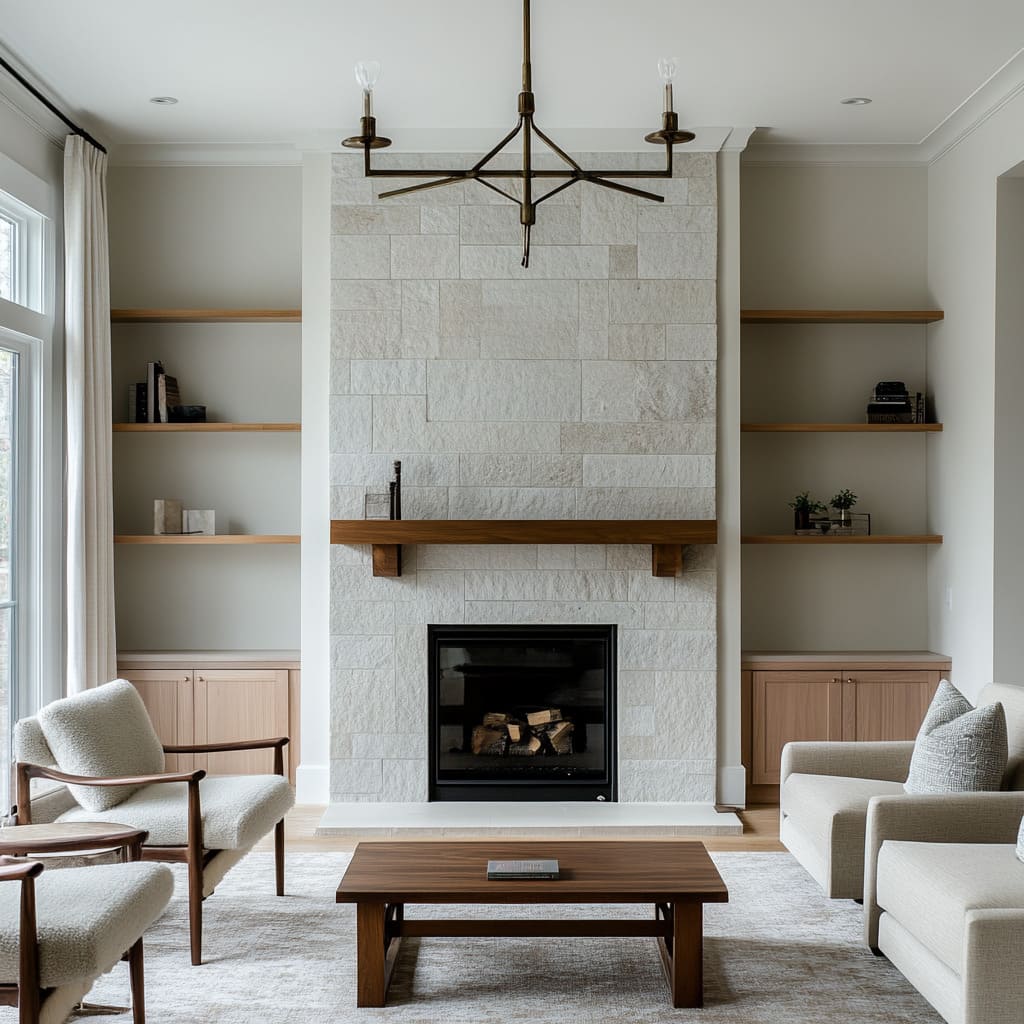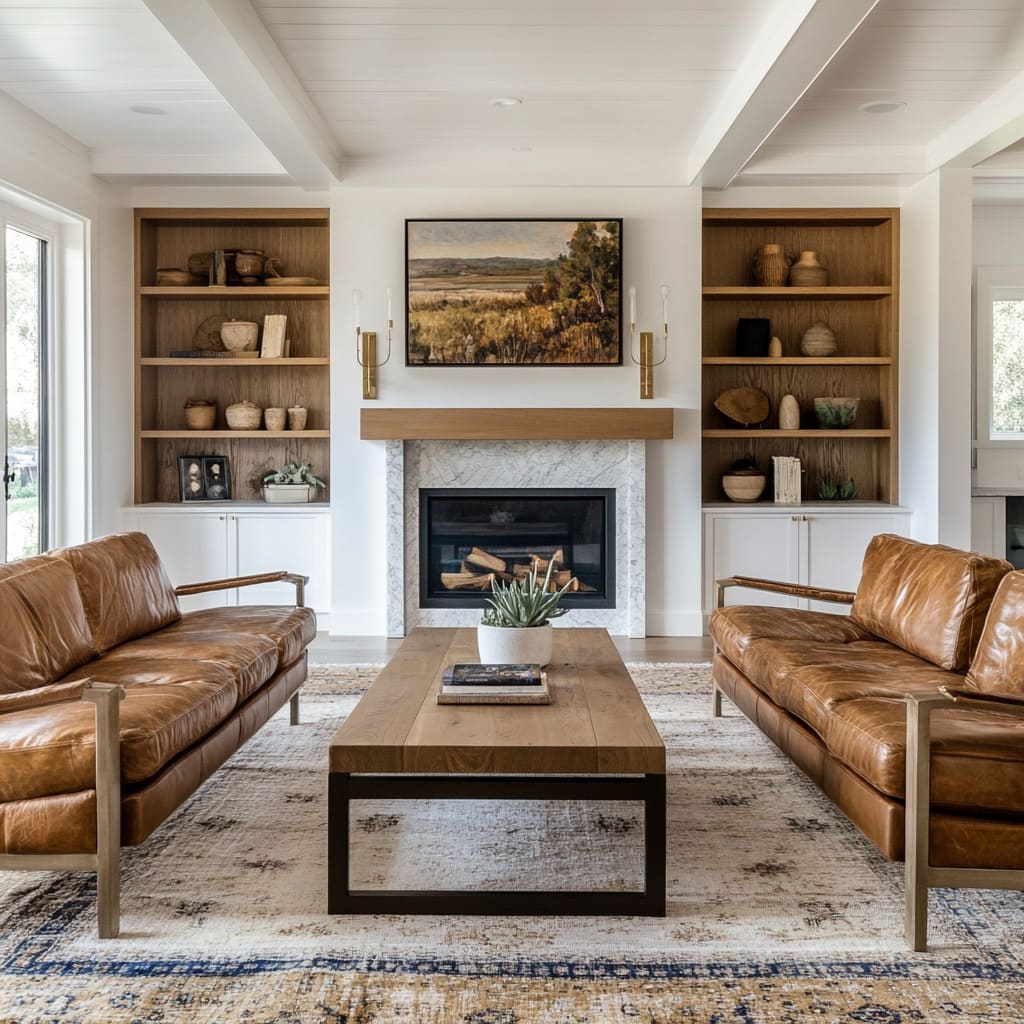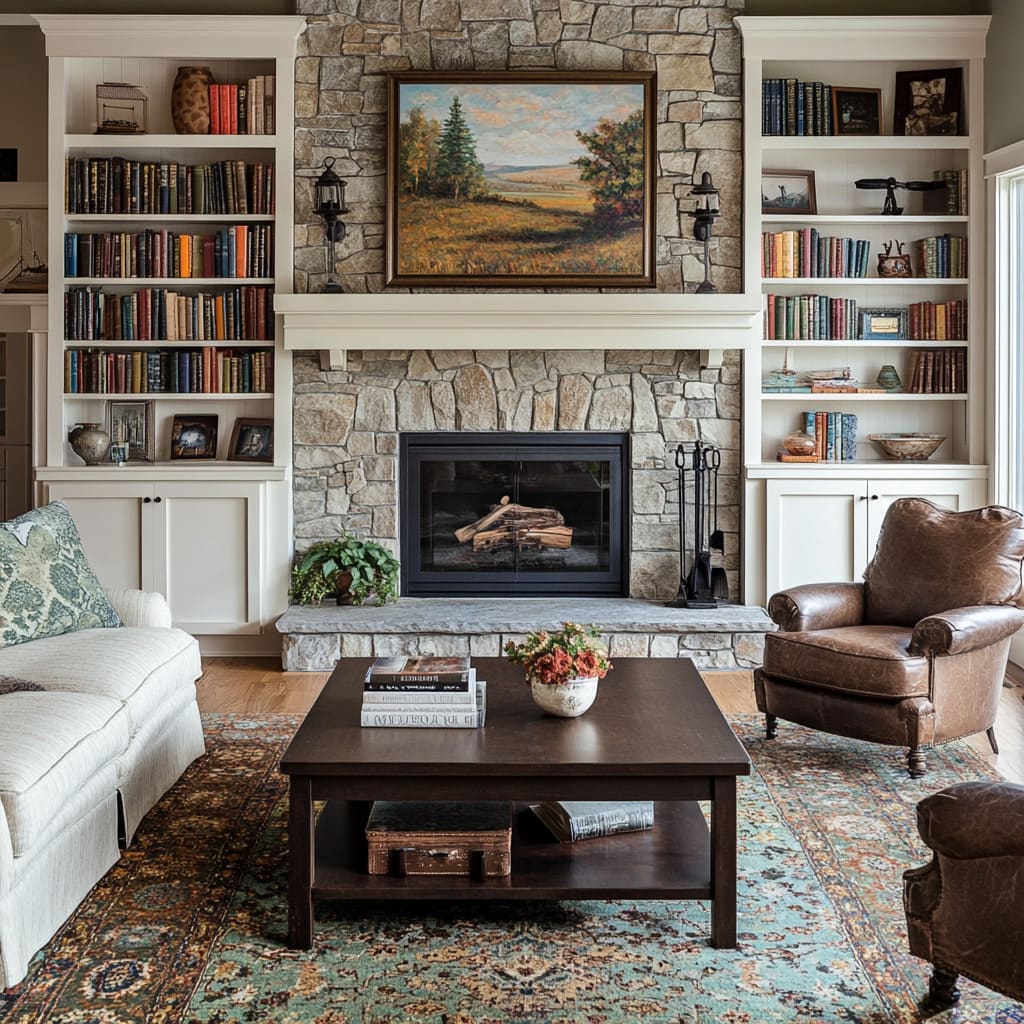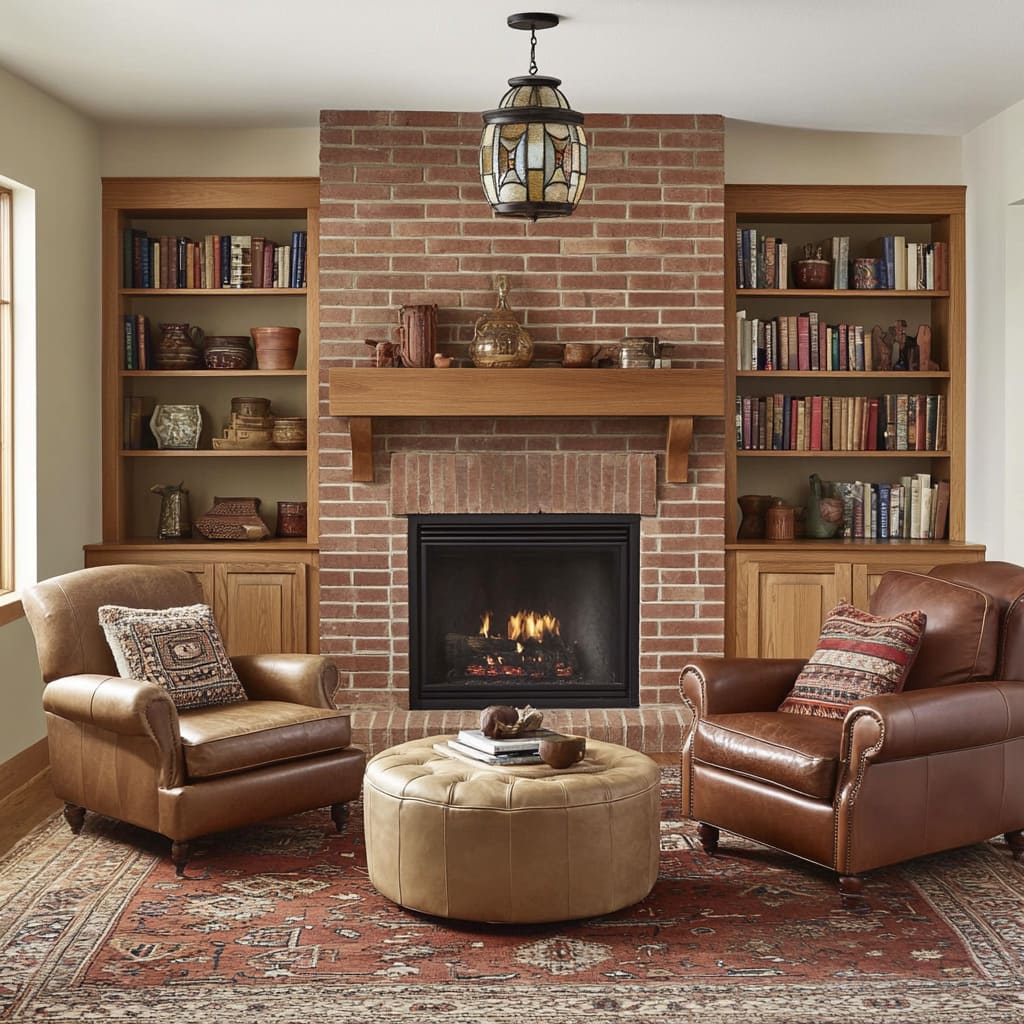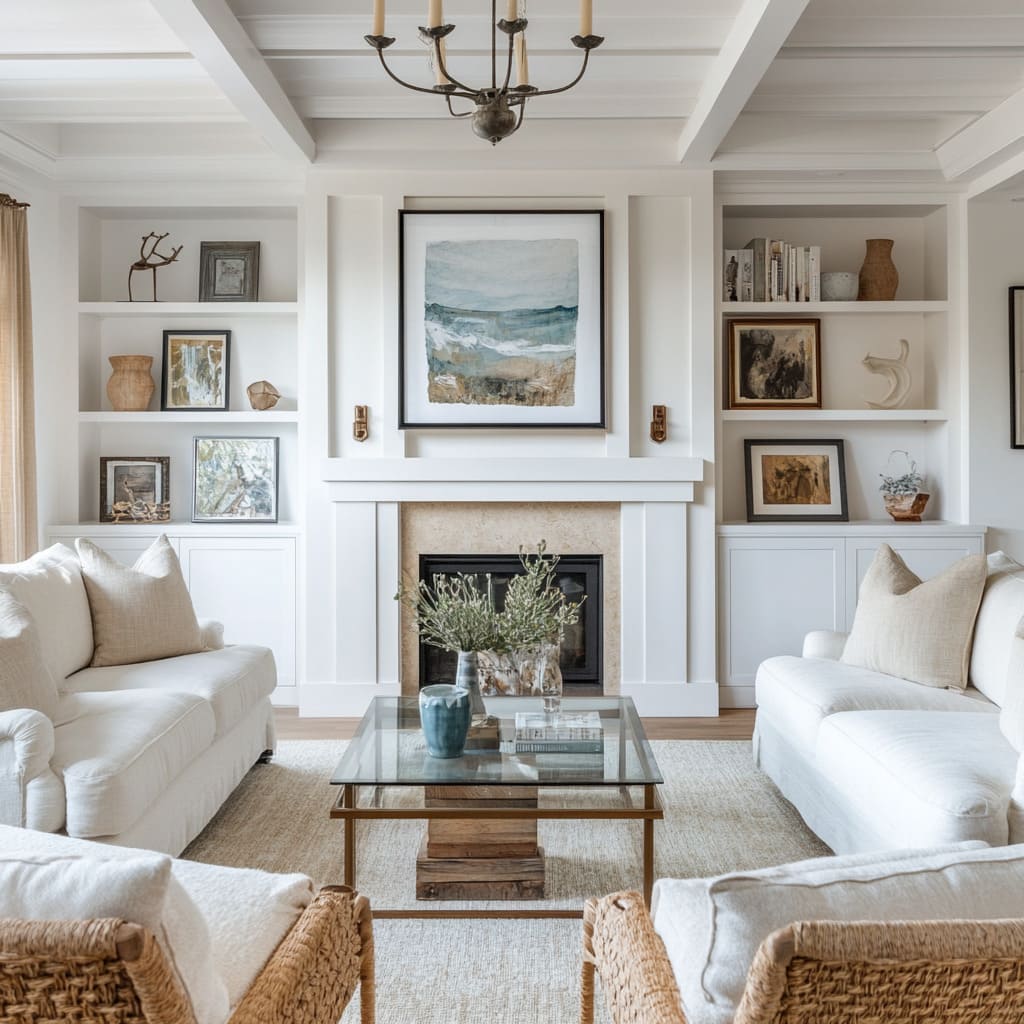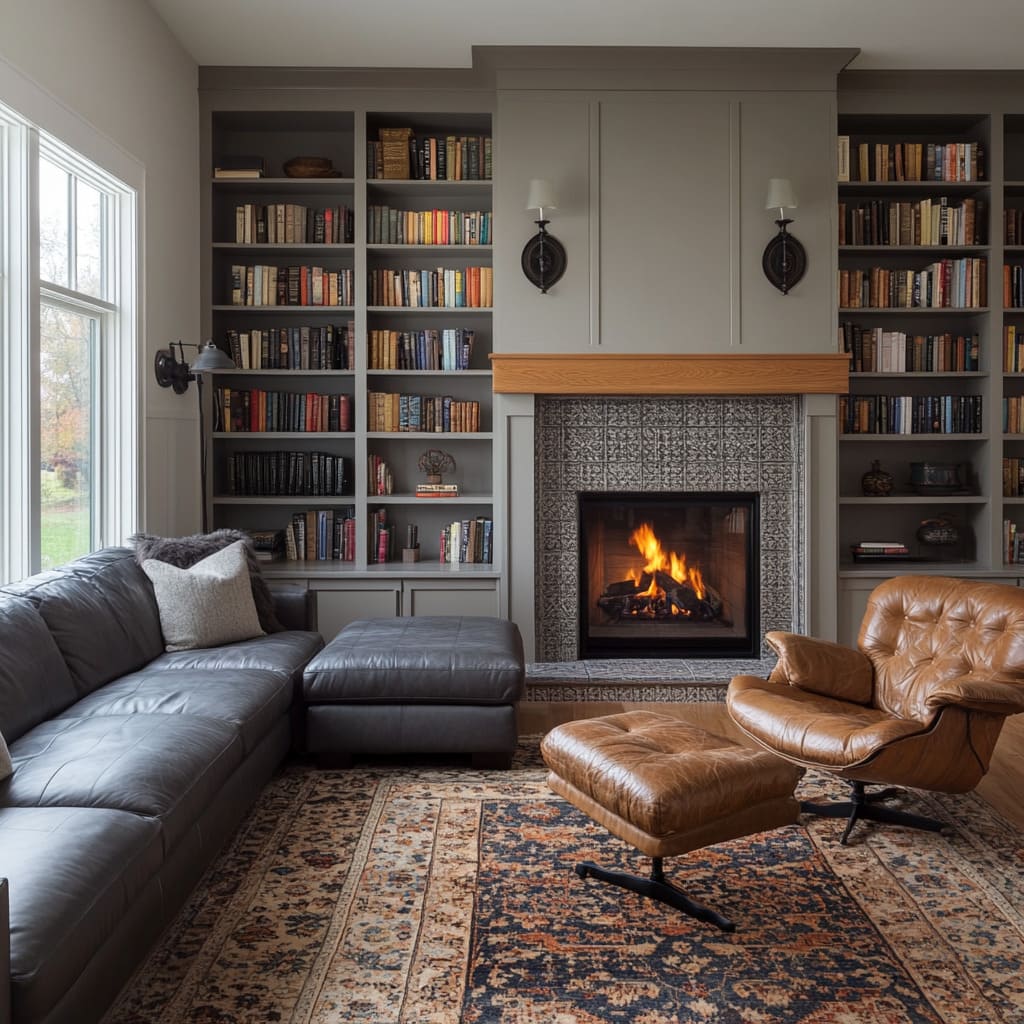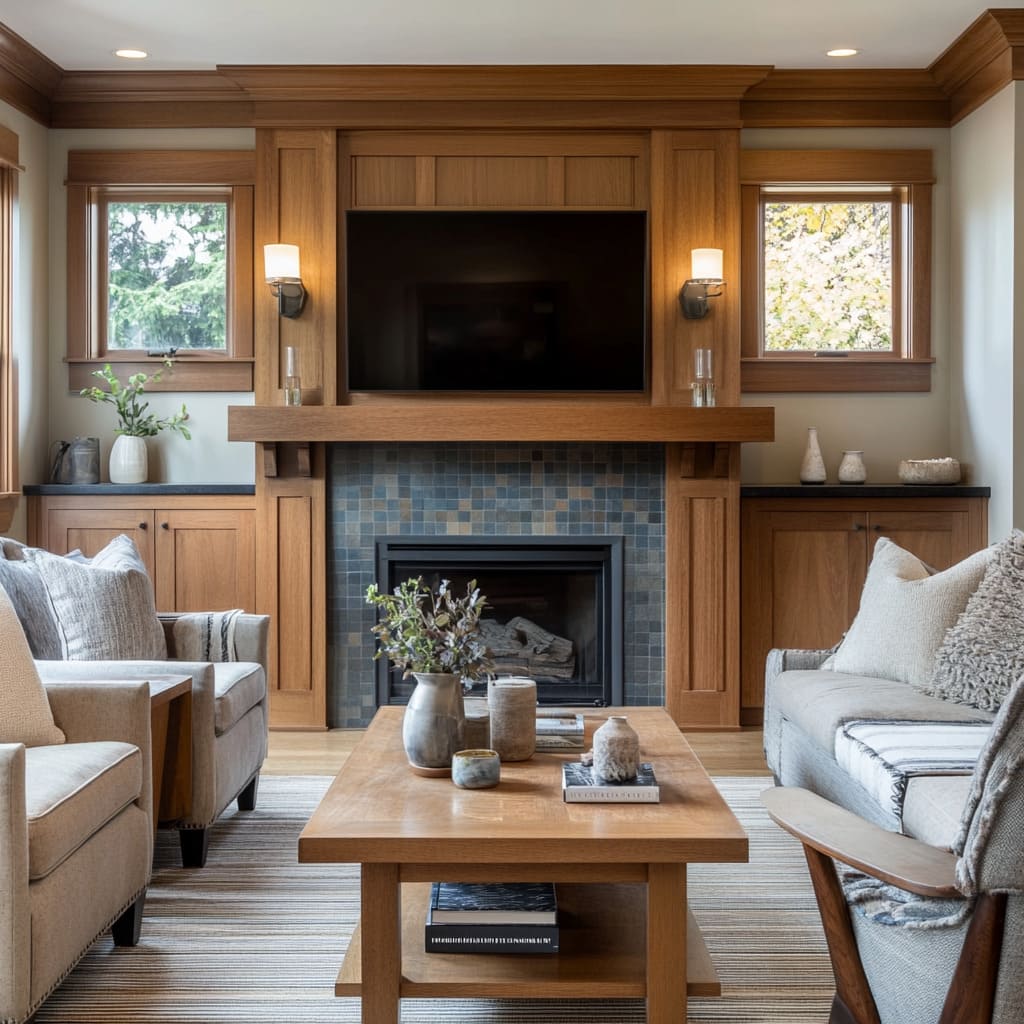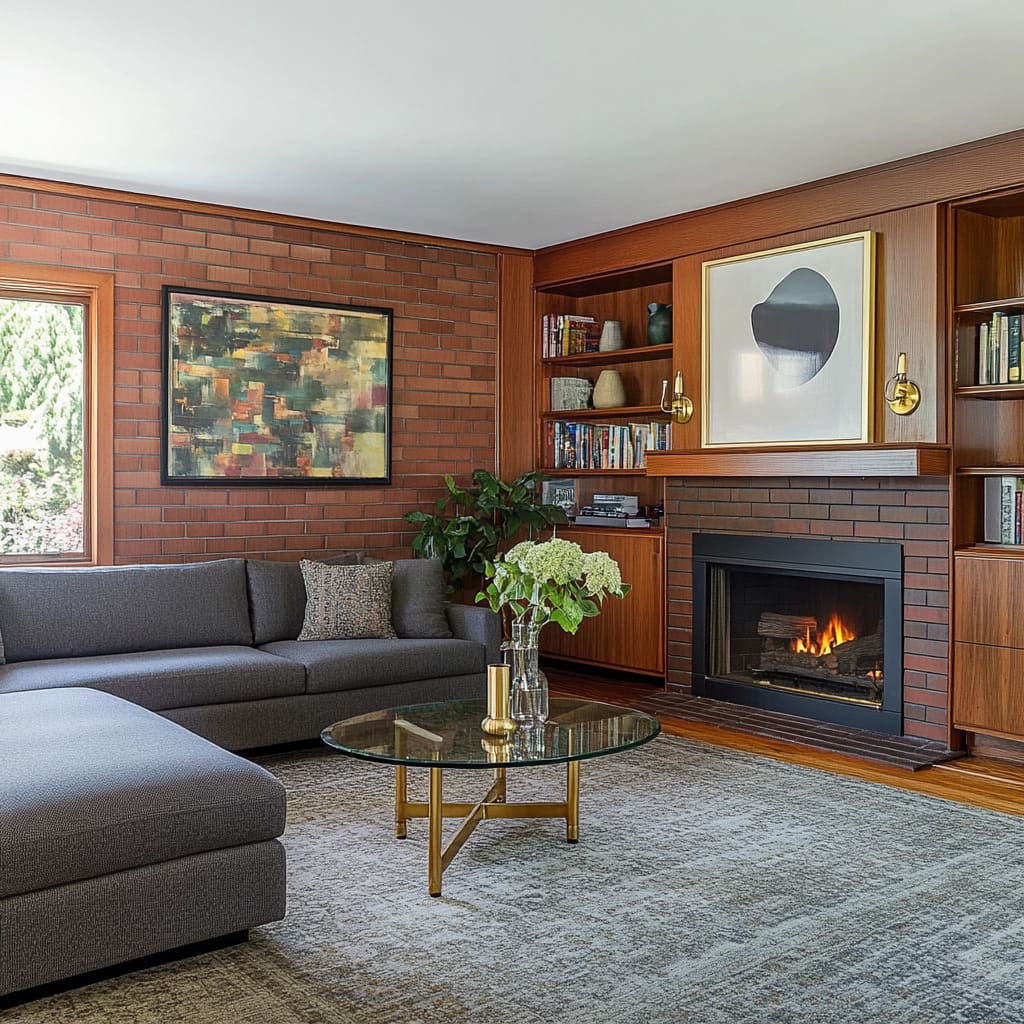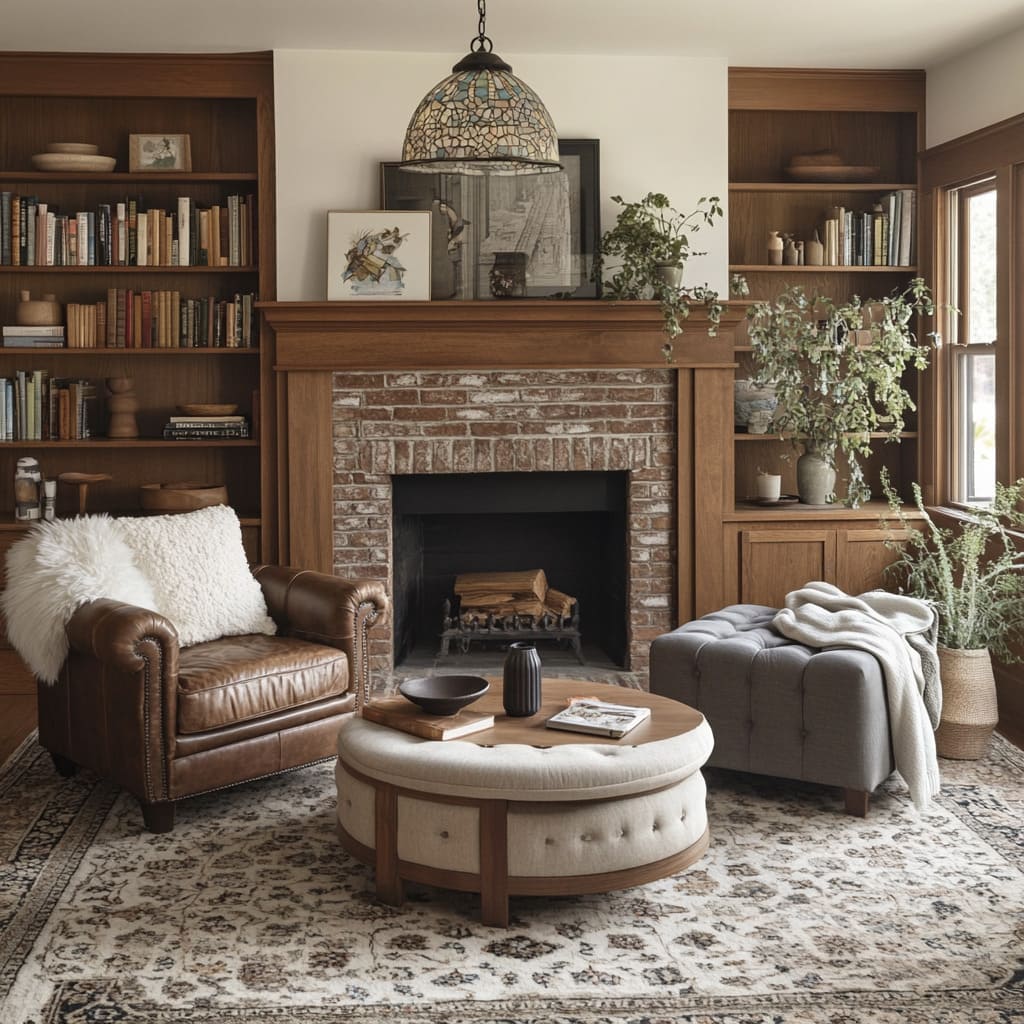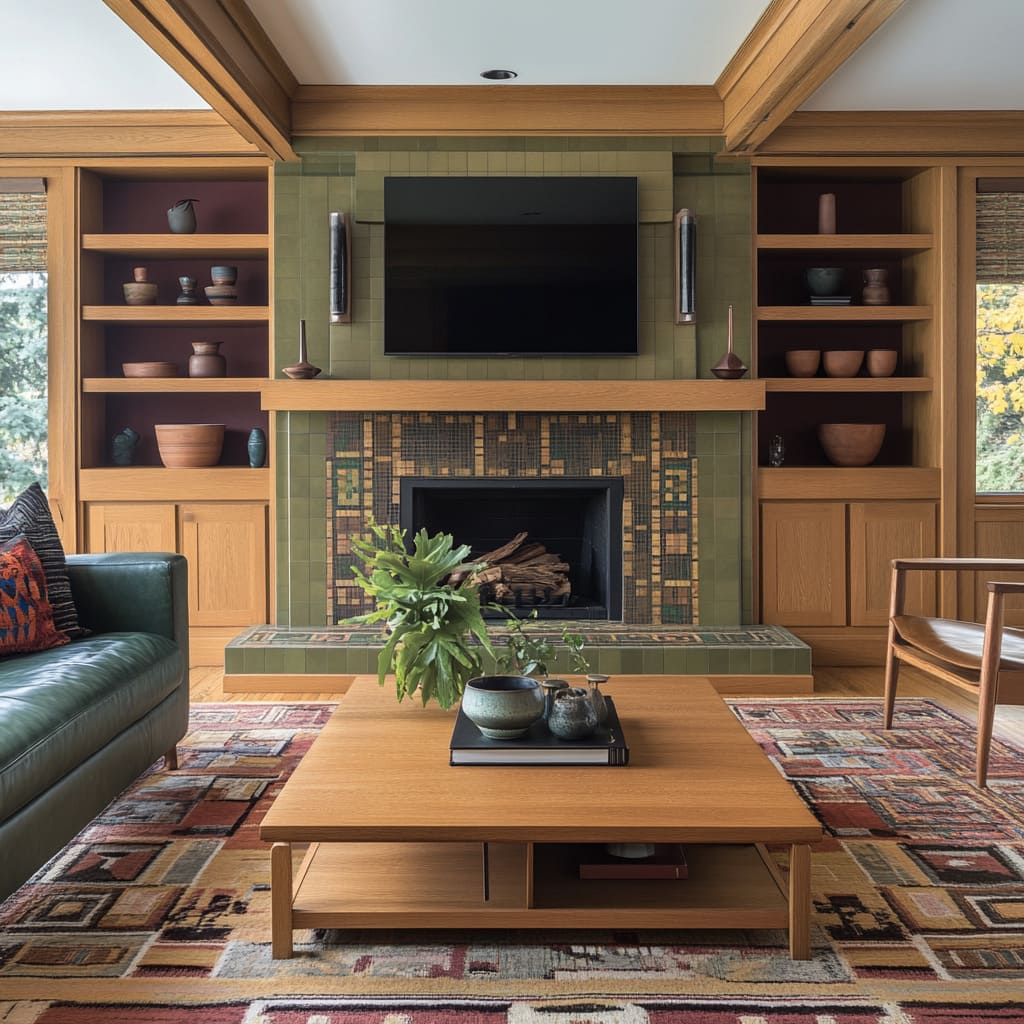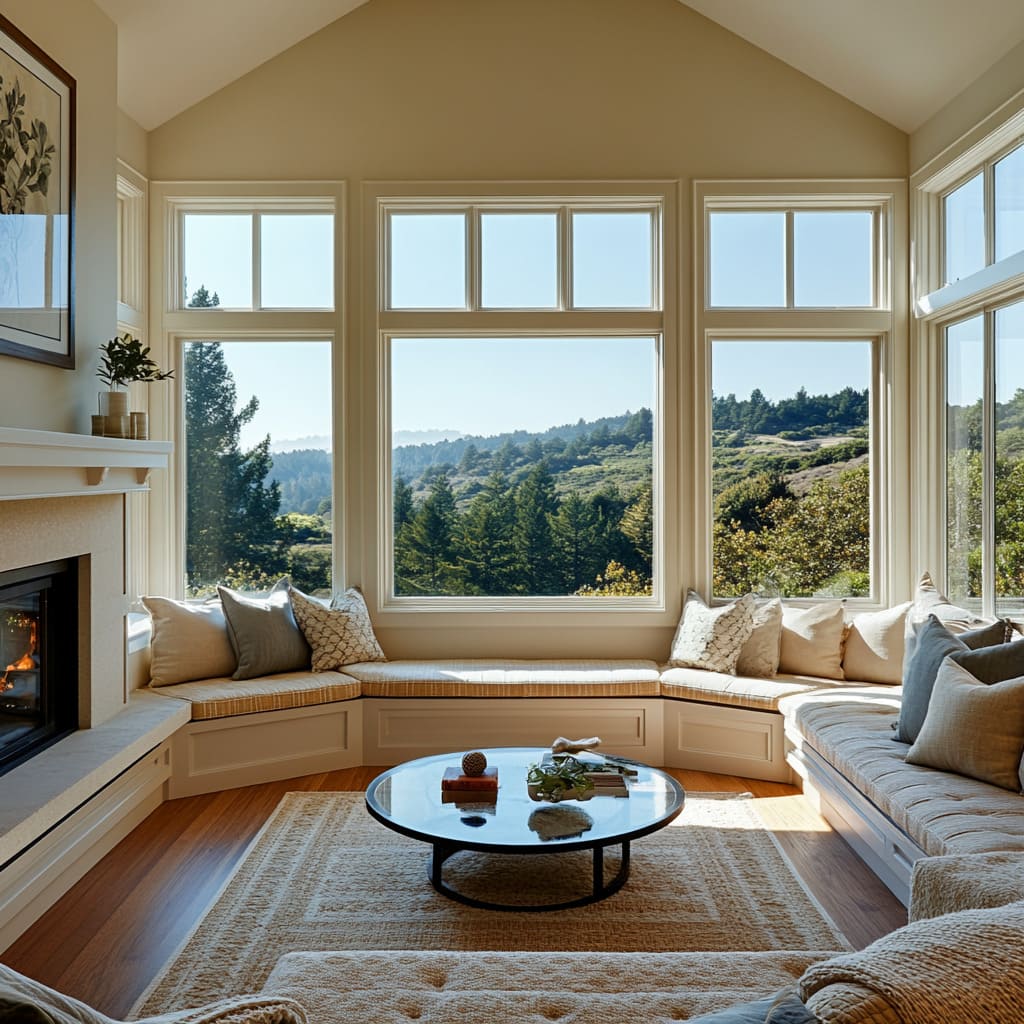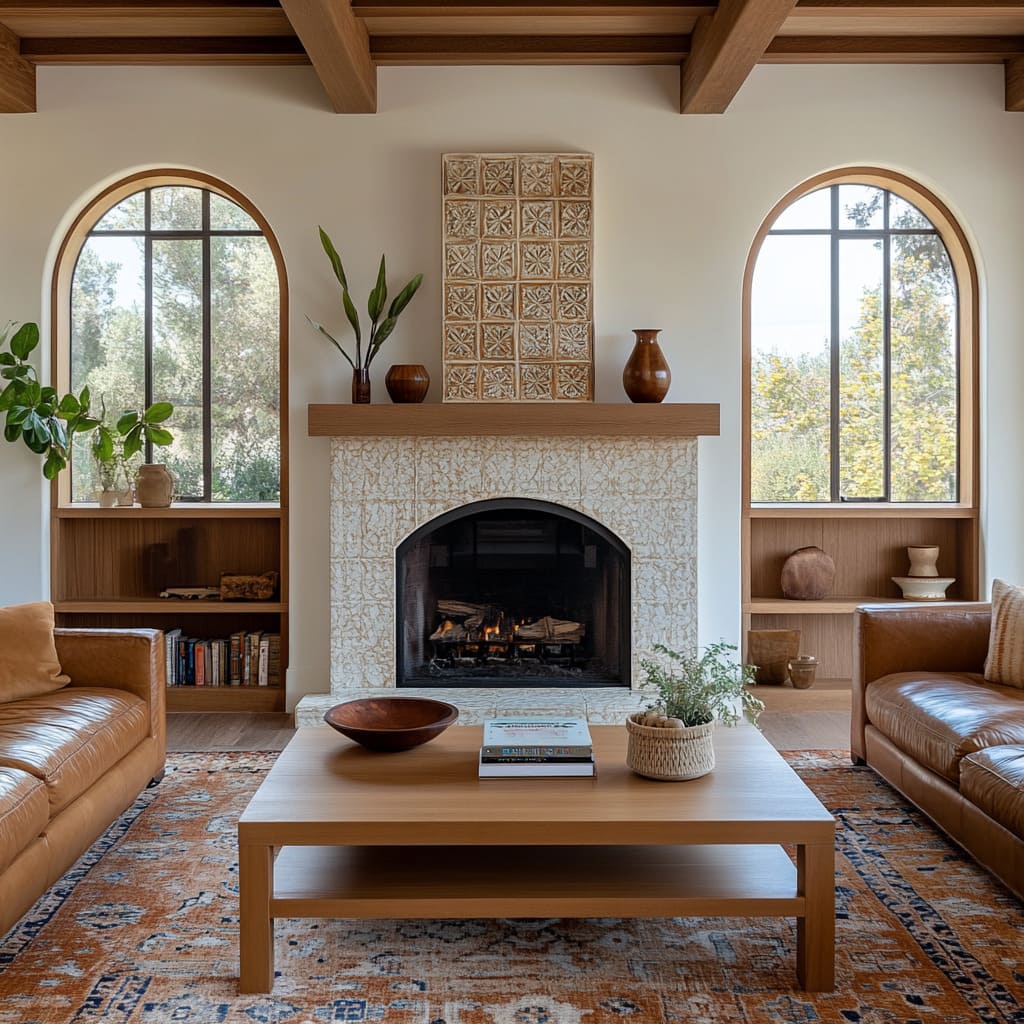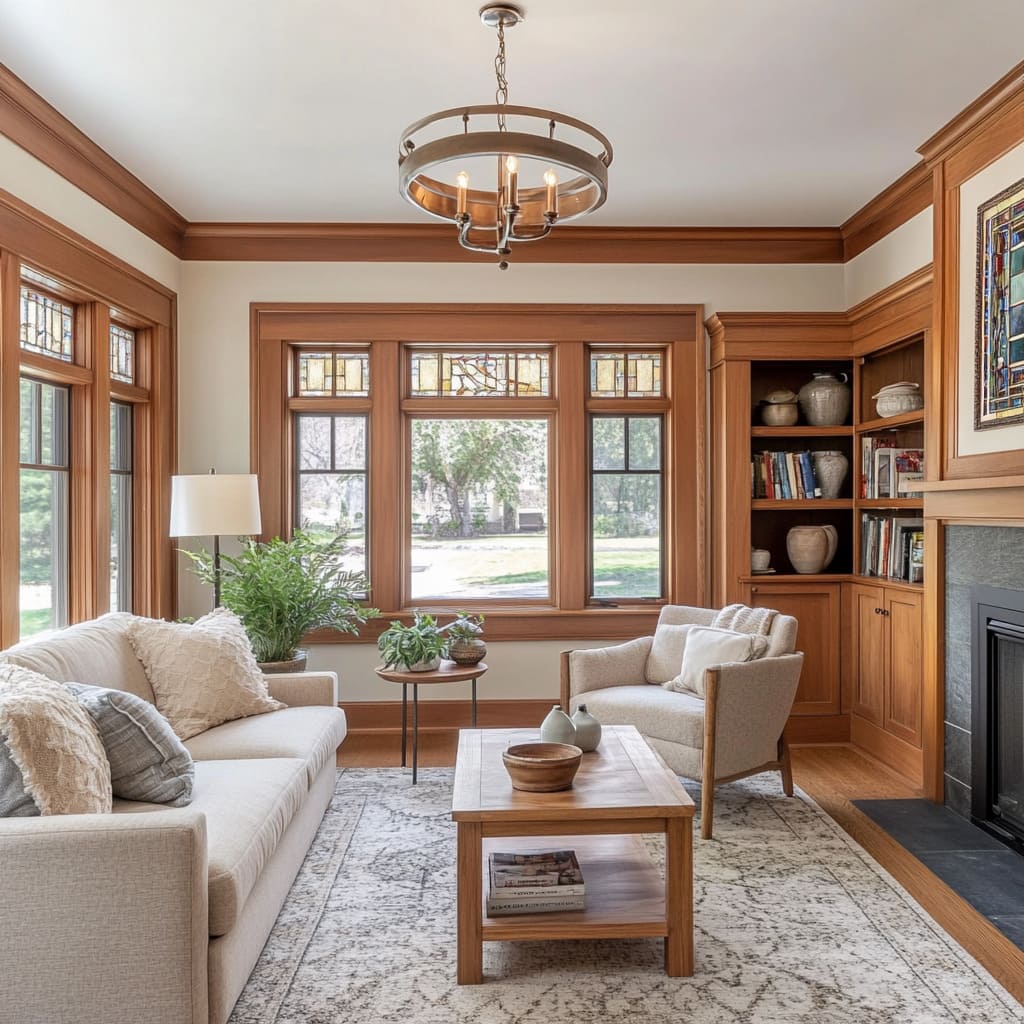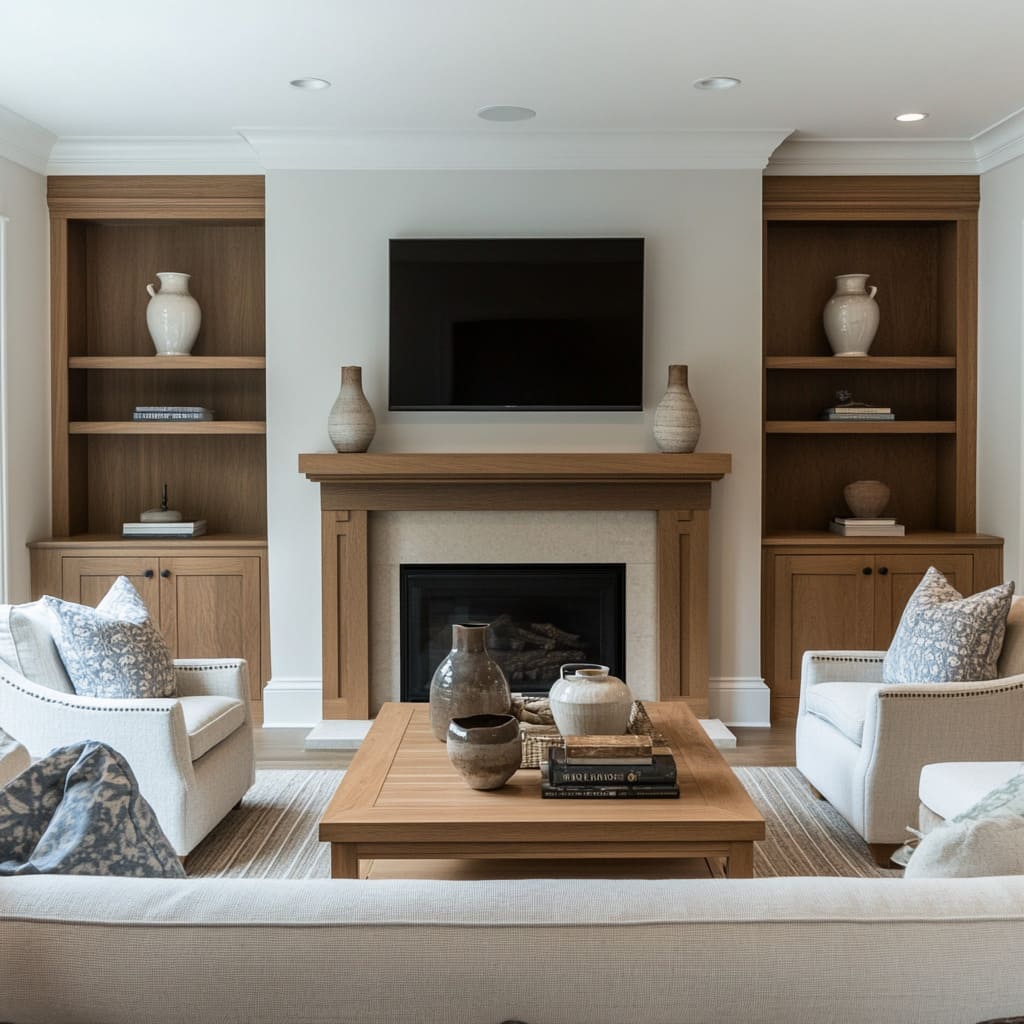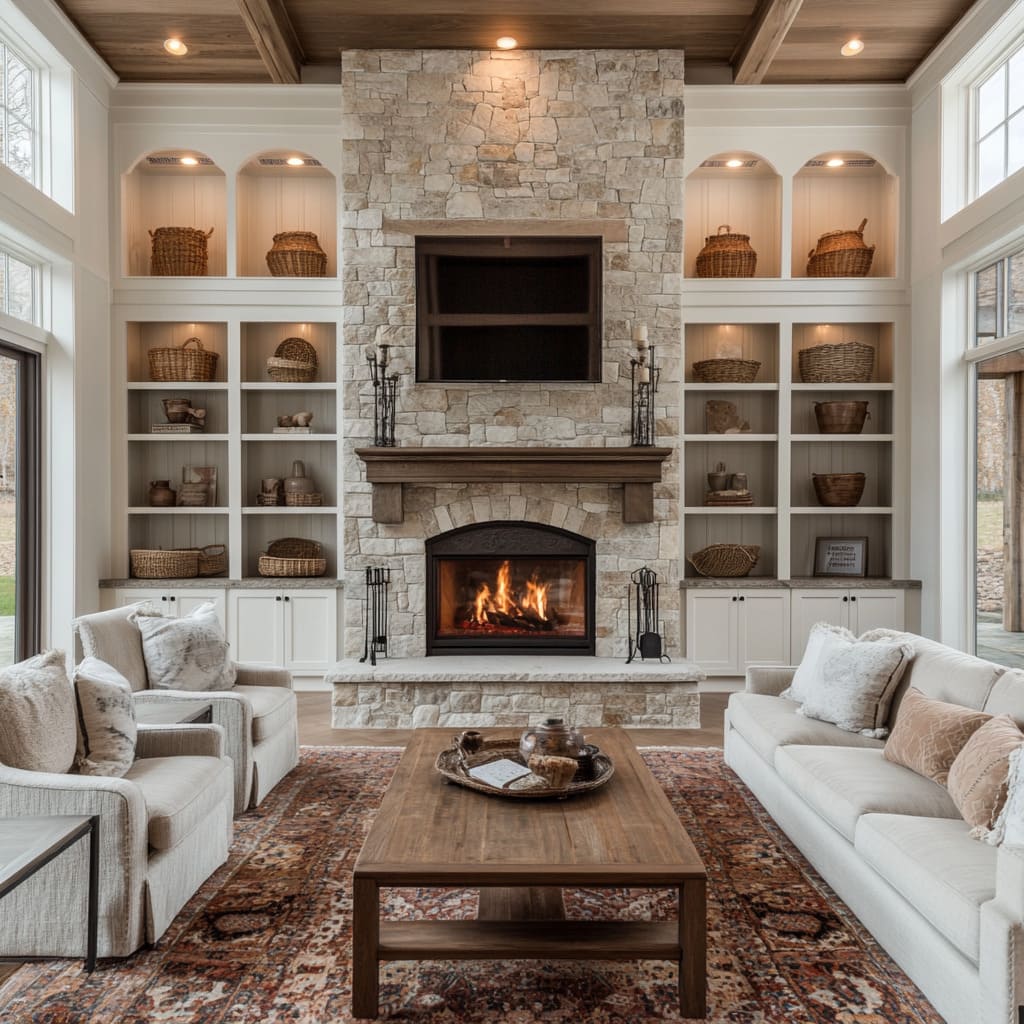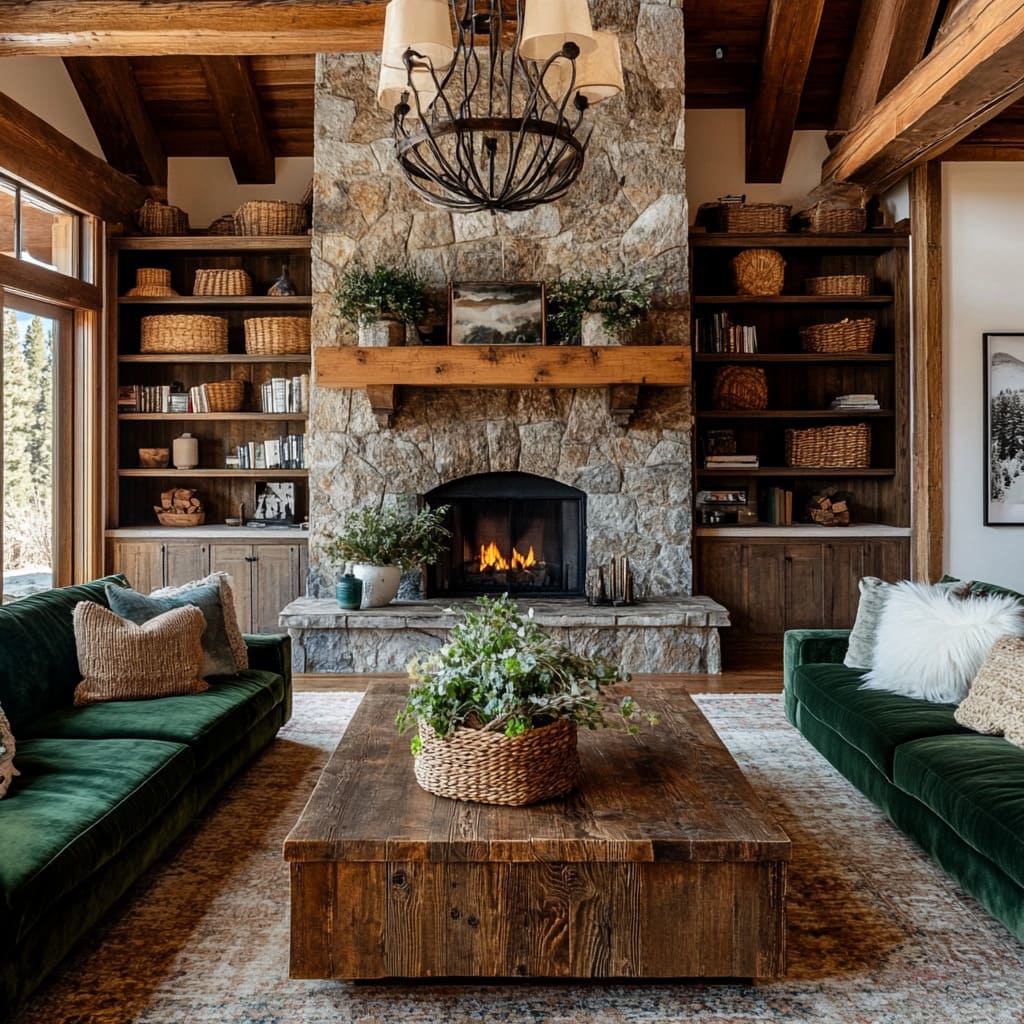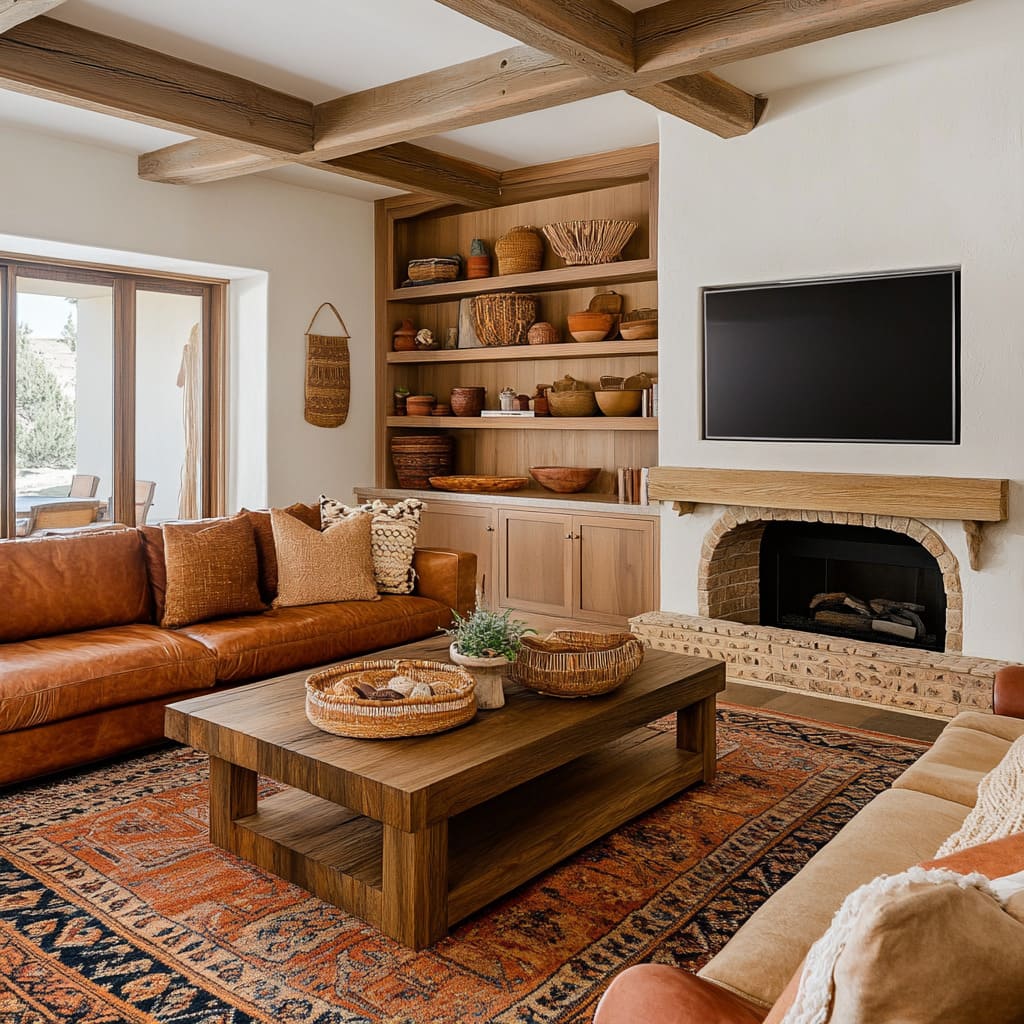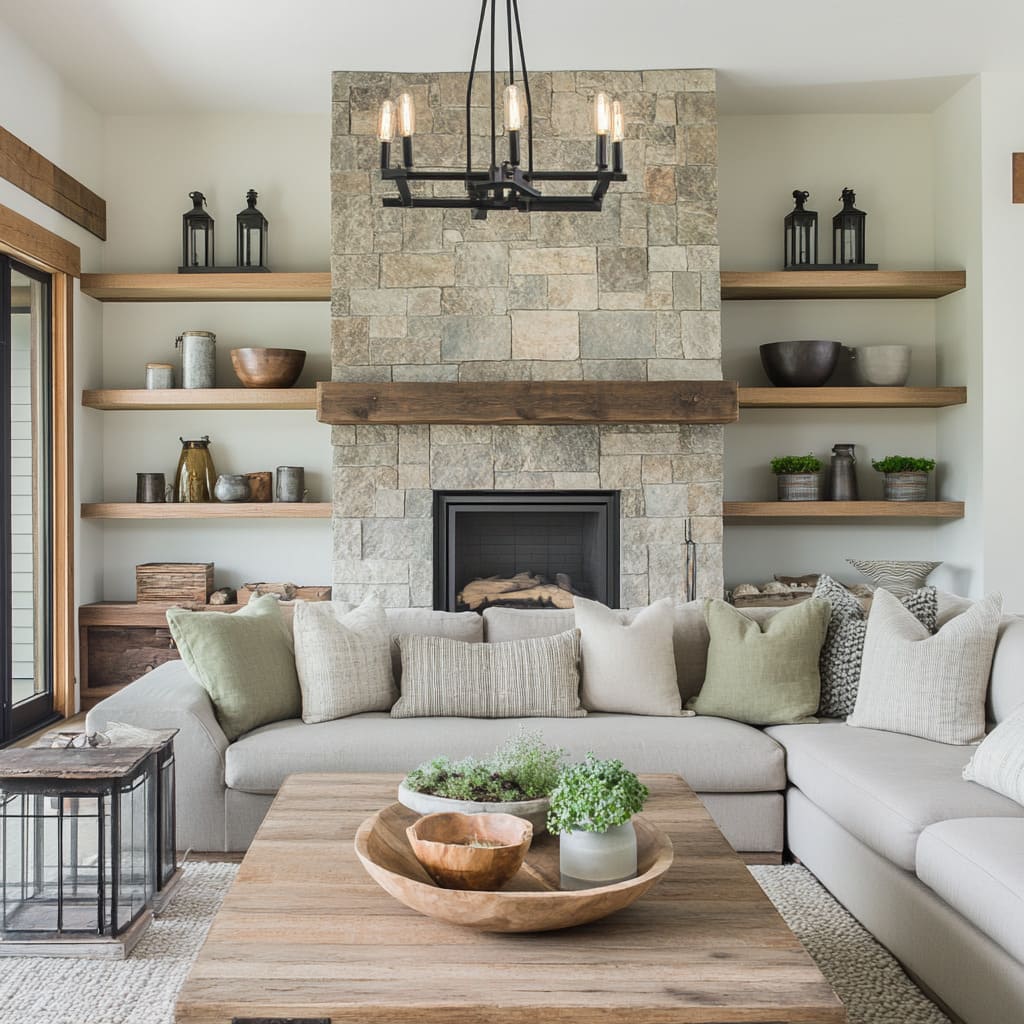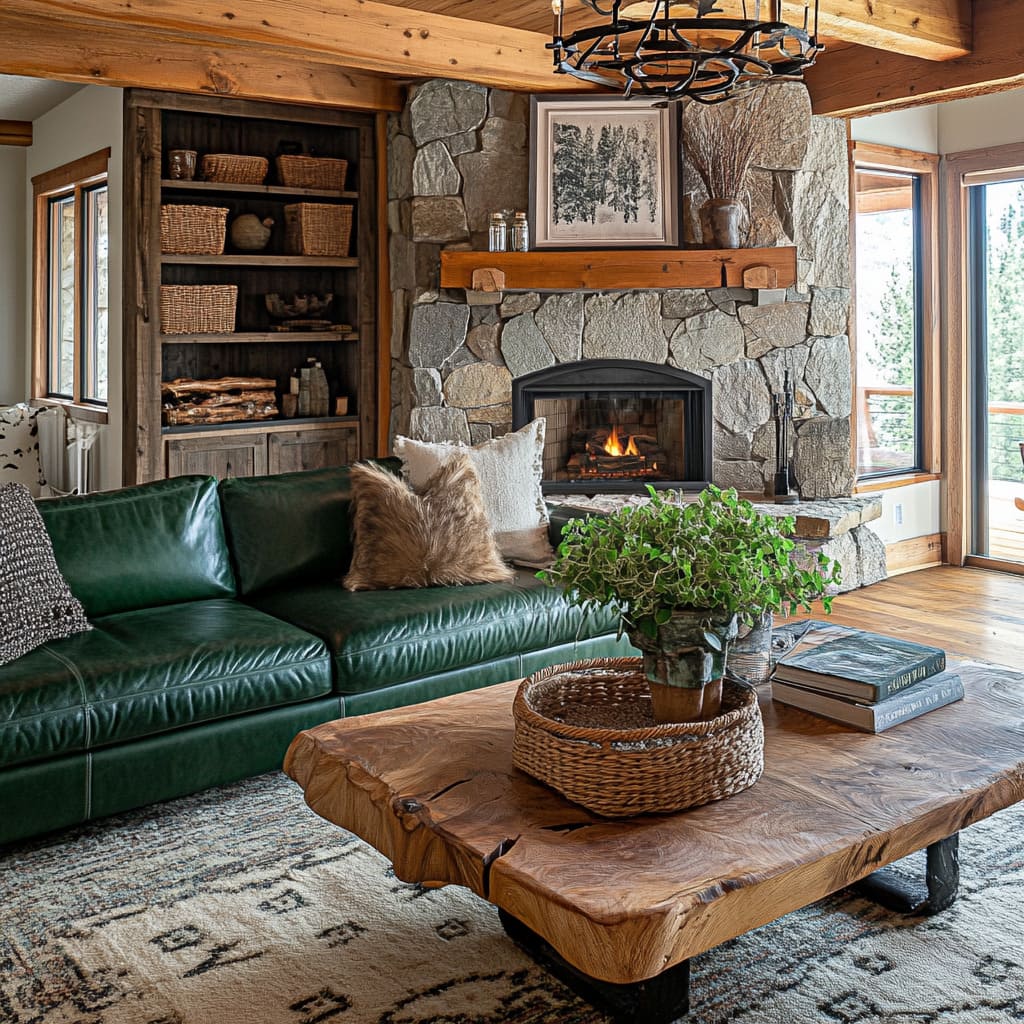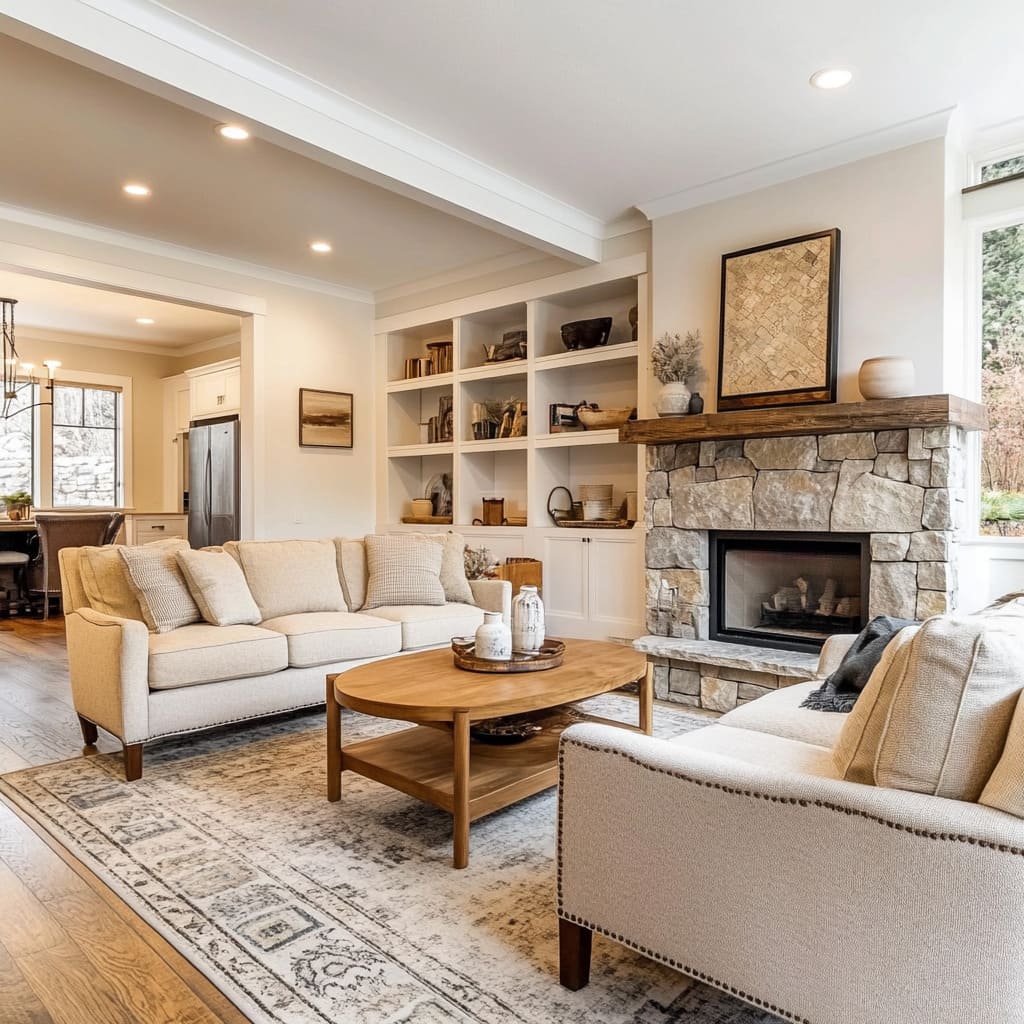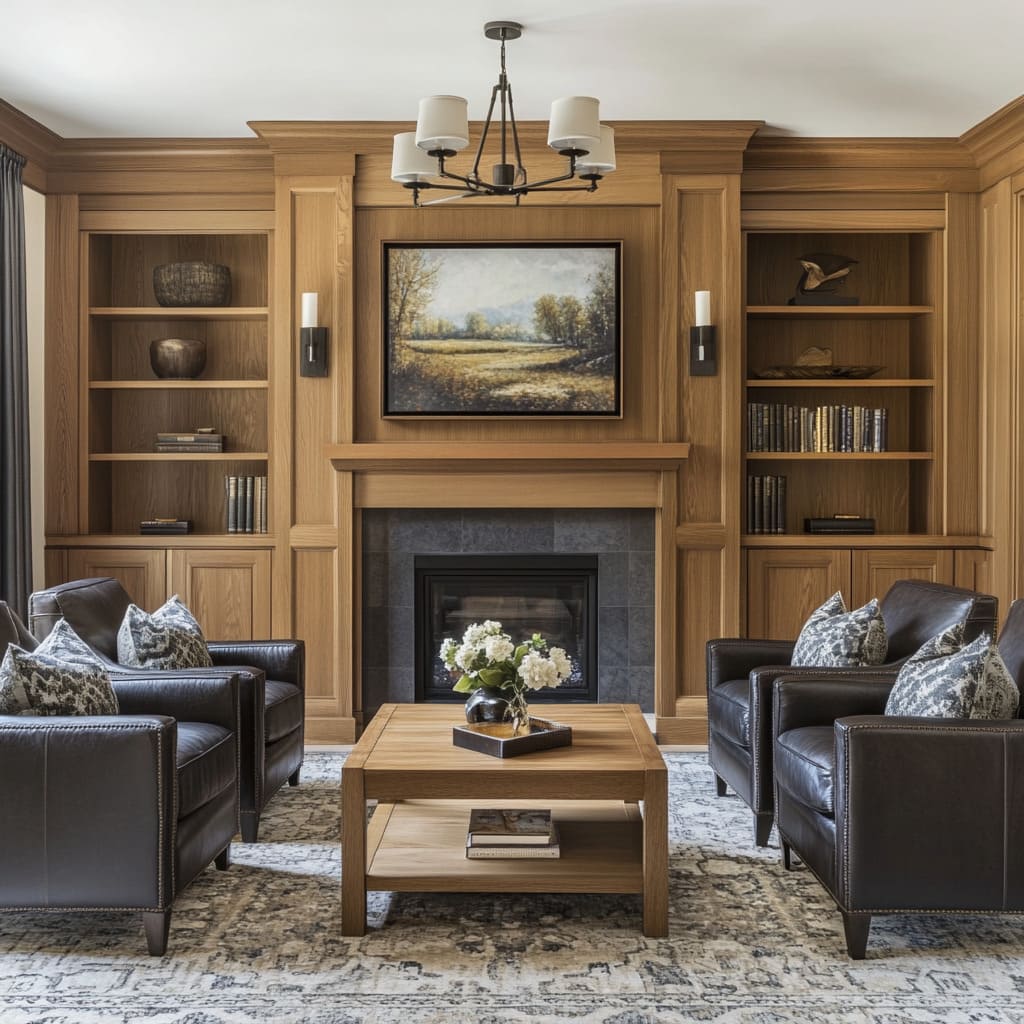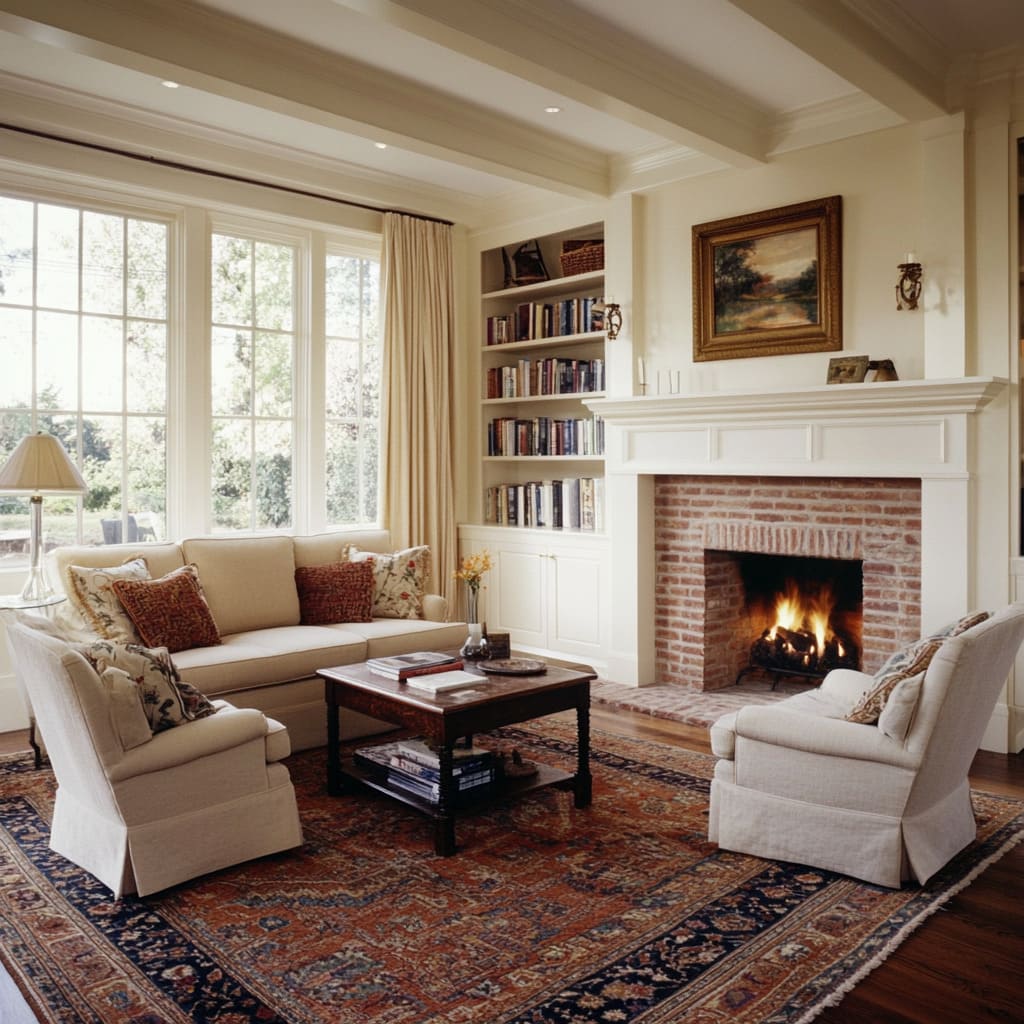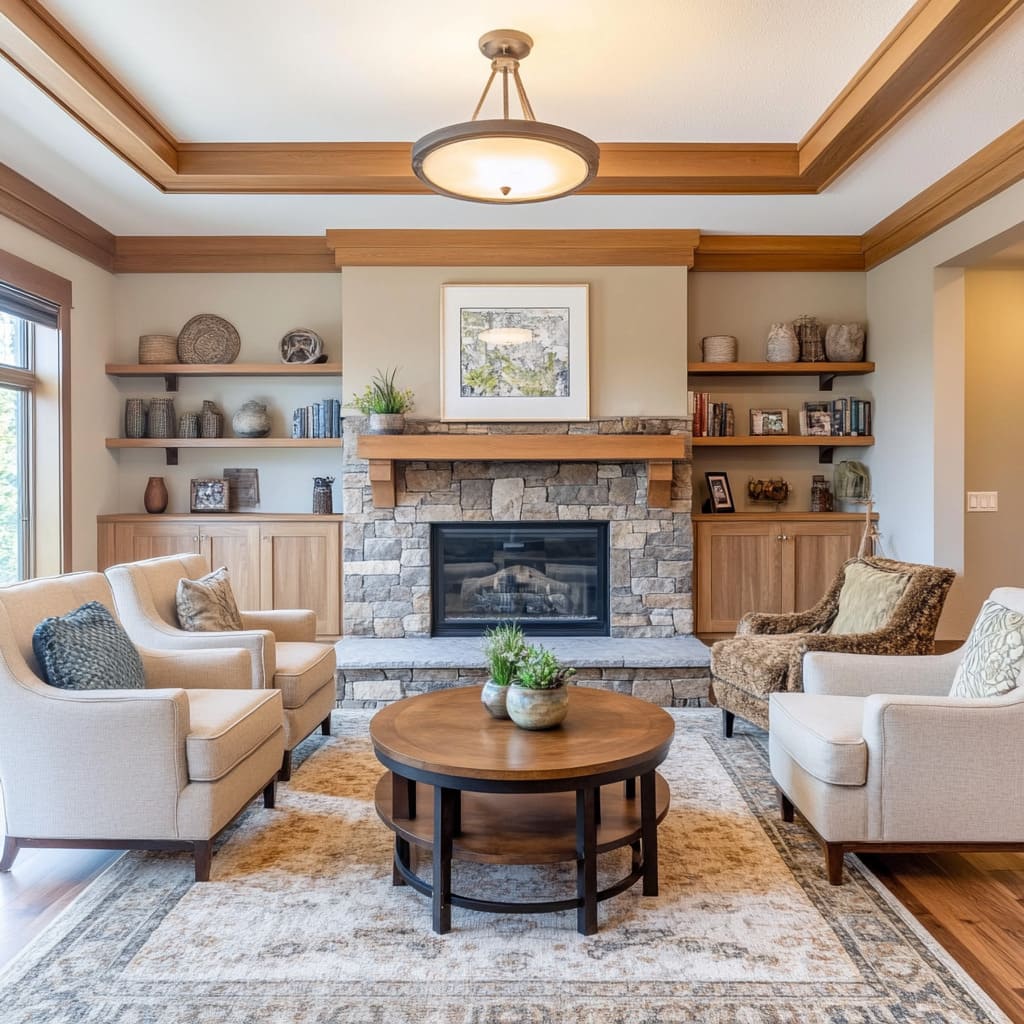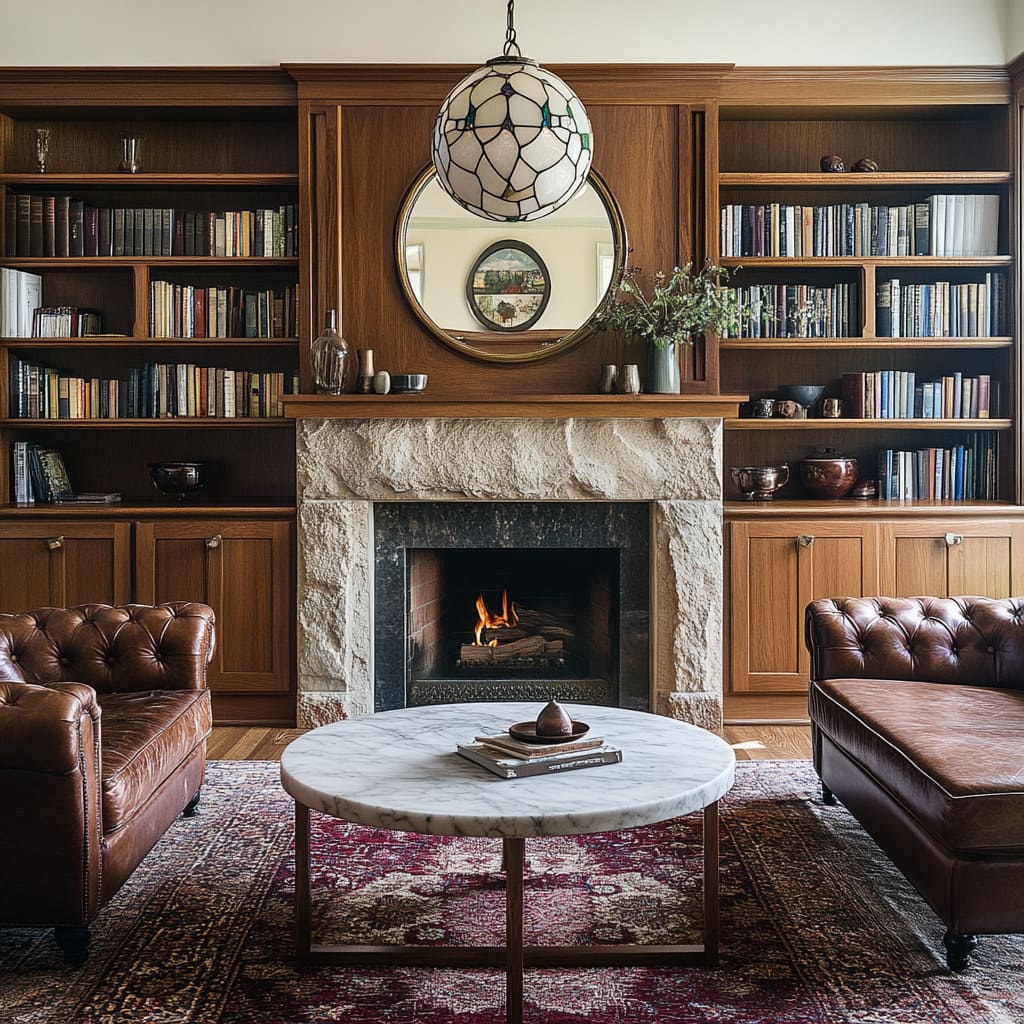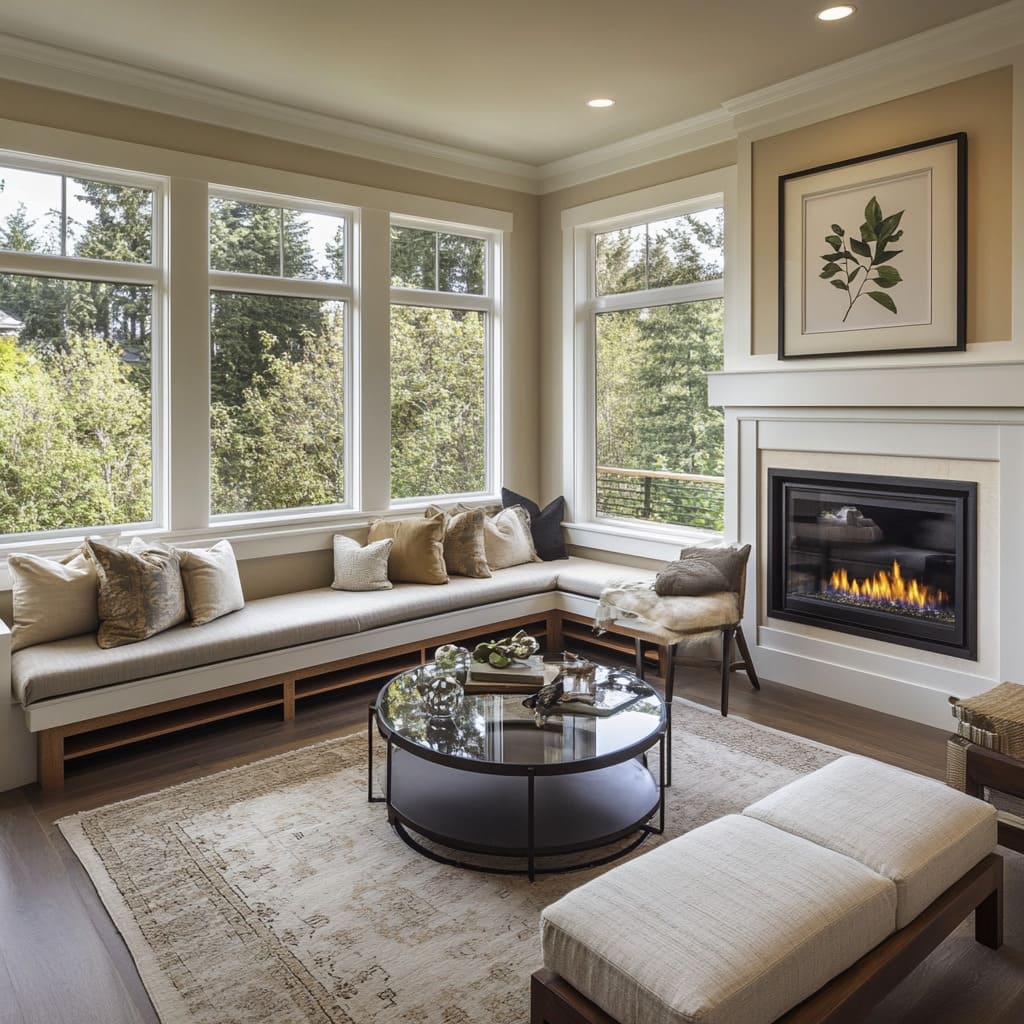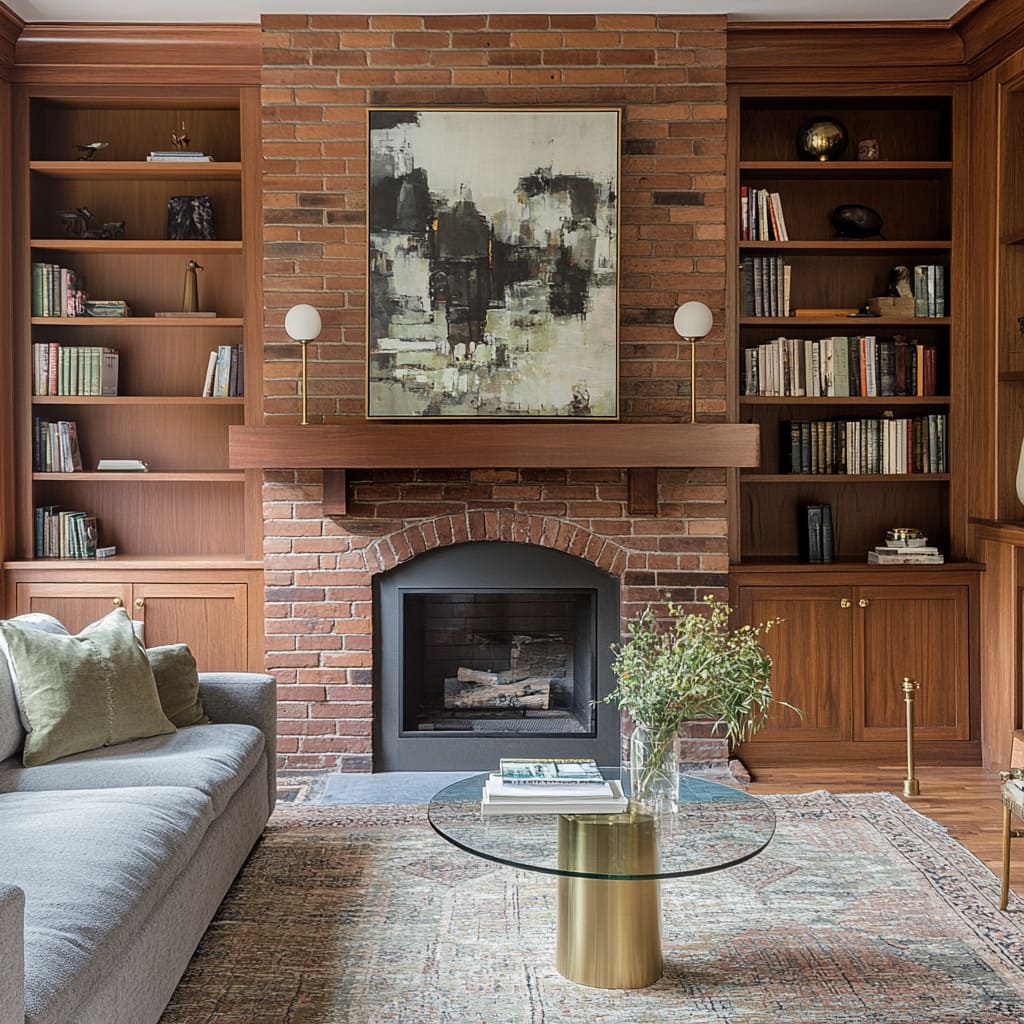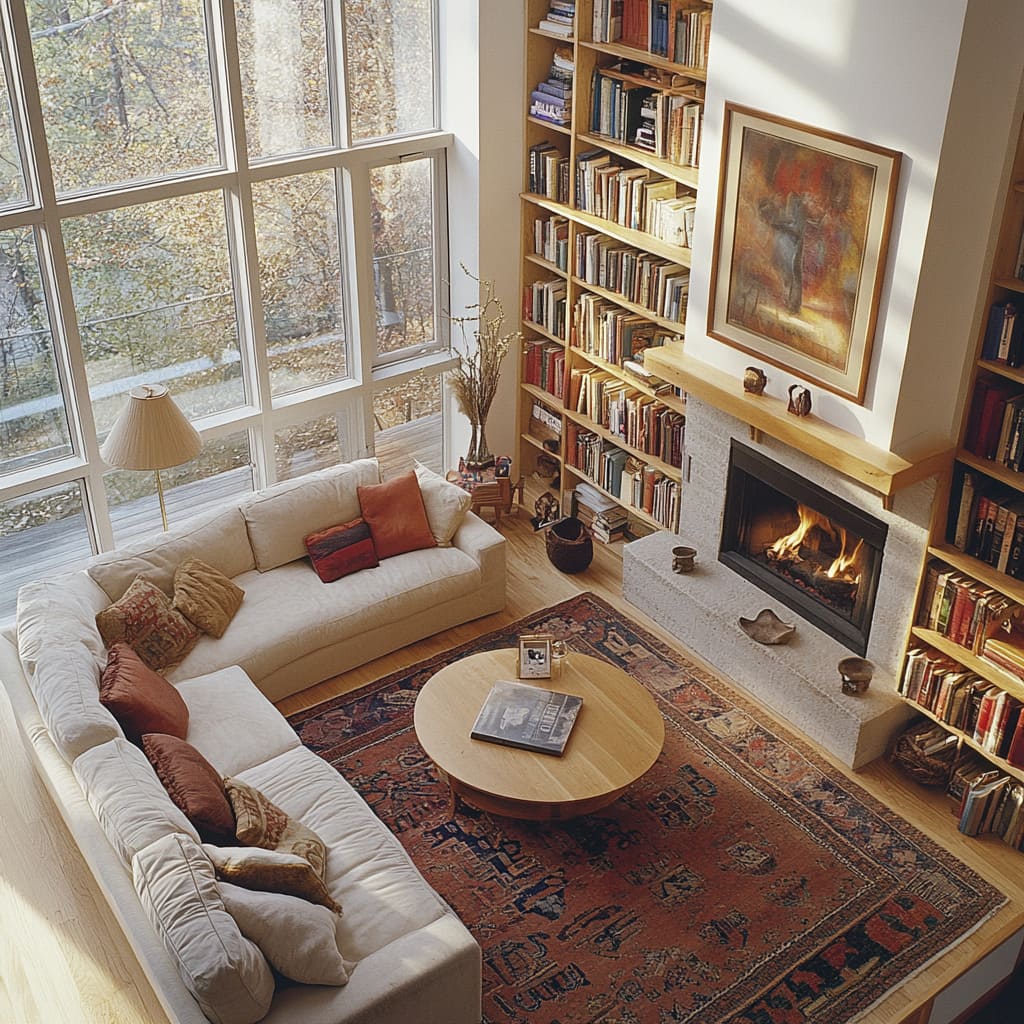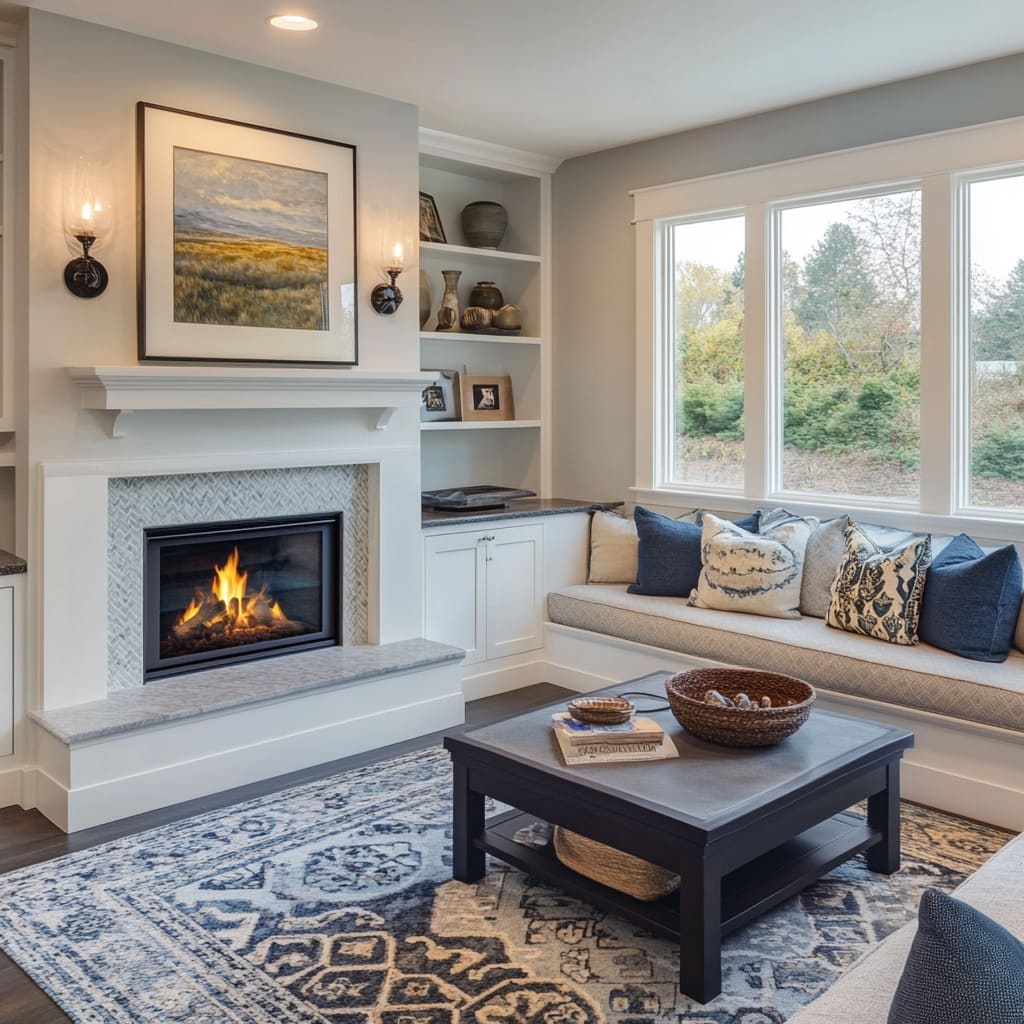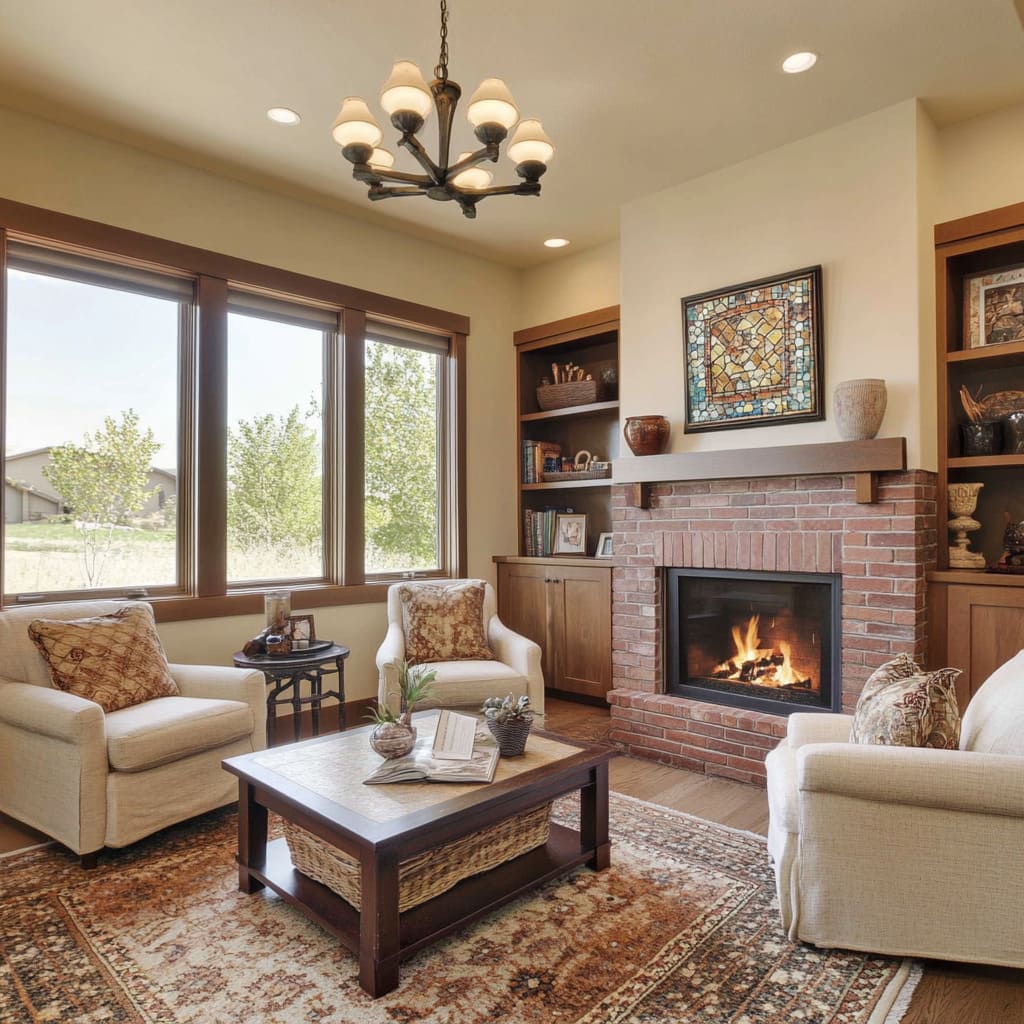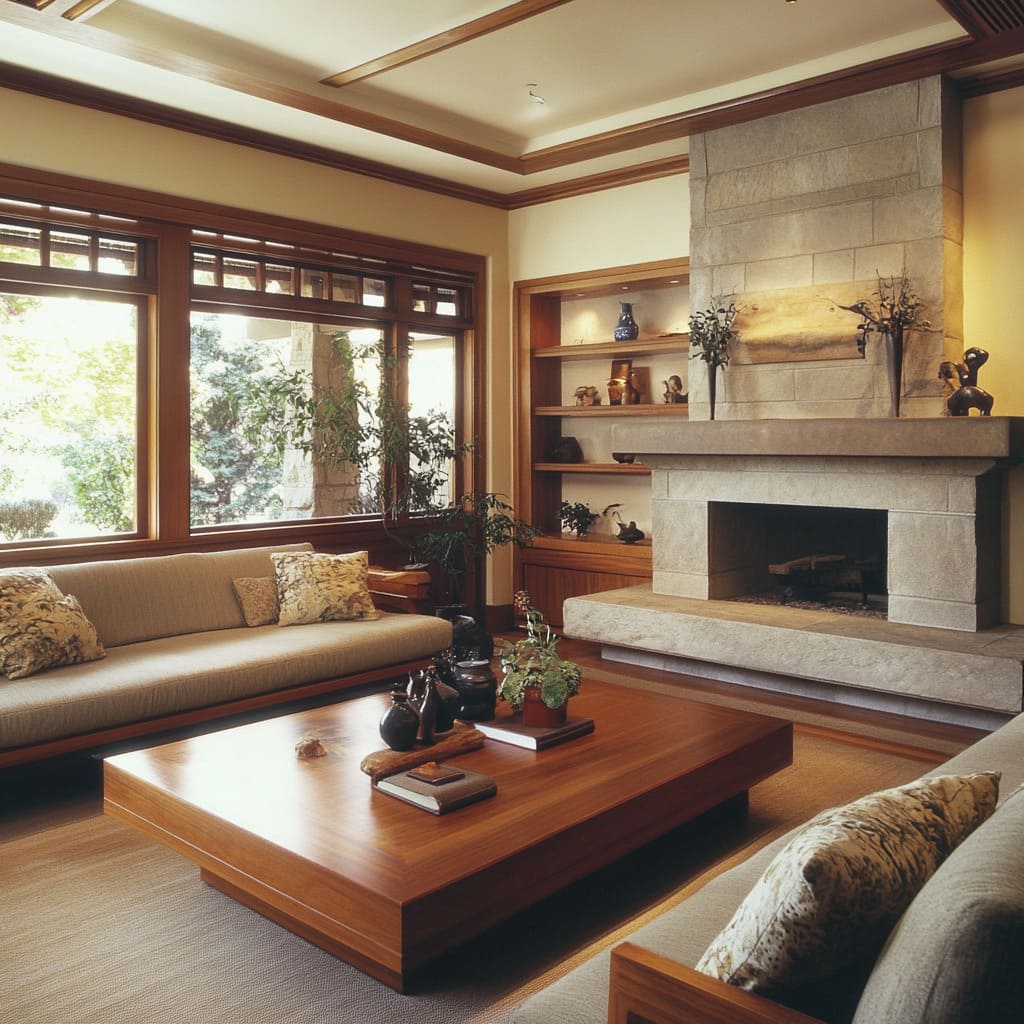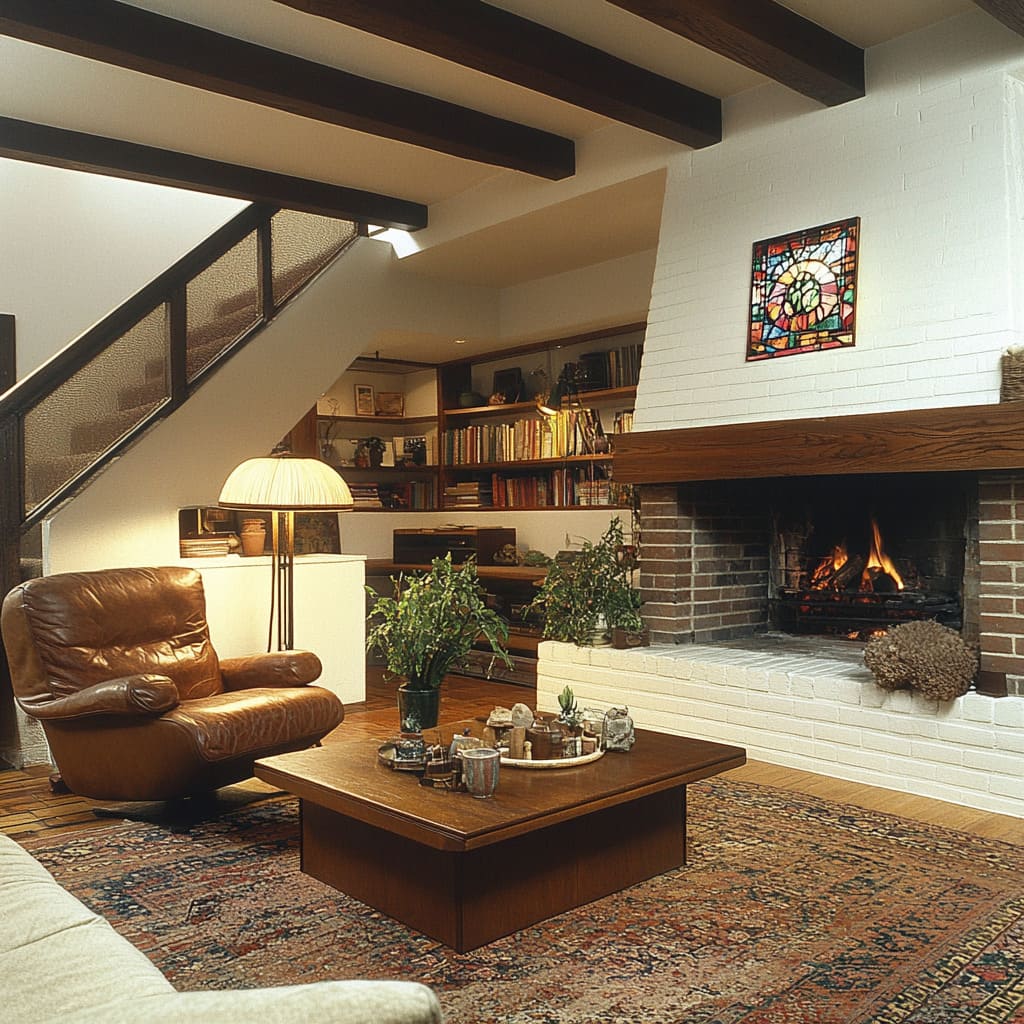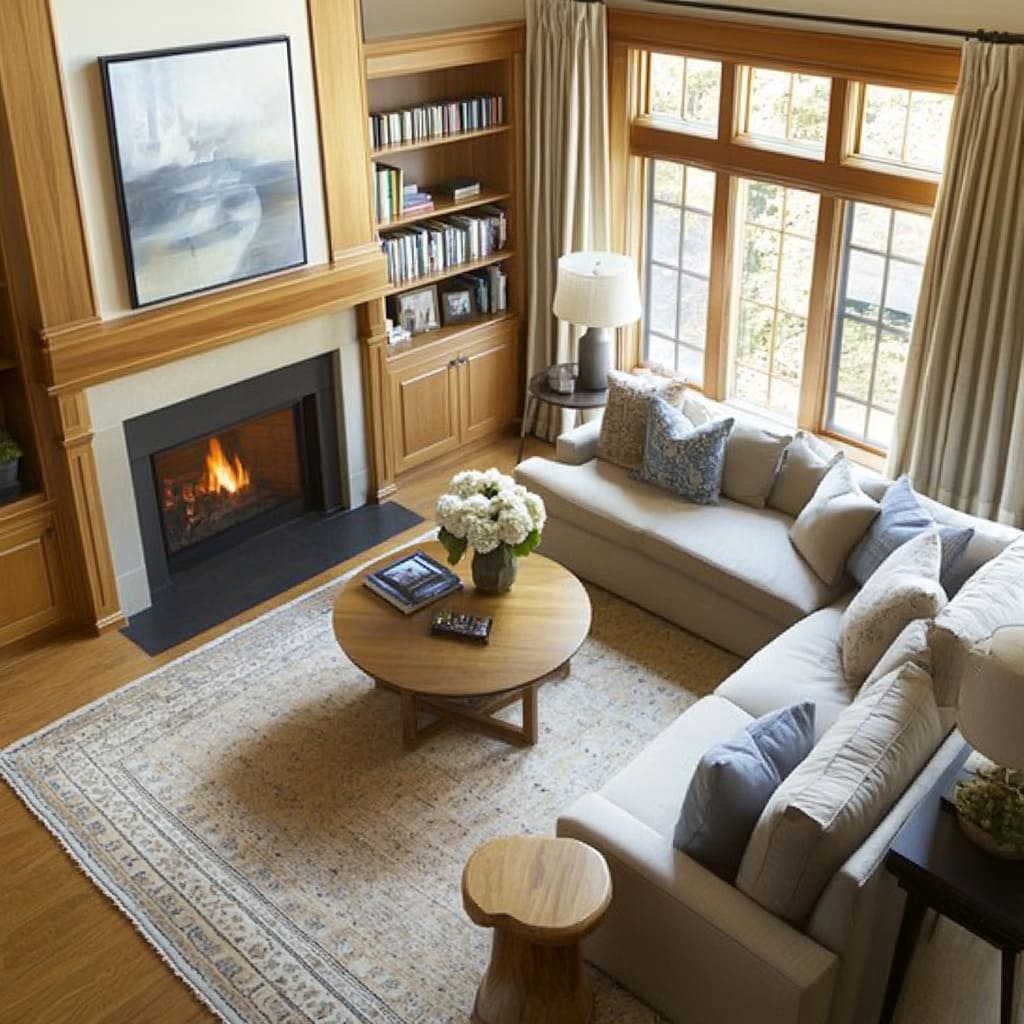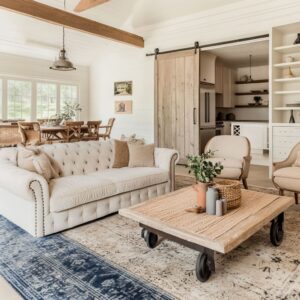The Minimalist Craftsman style offers a unique blend of simplicity and thoughtful craftsmanship, creating spaces that feel open, warm, and inviting. This style doesn’t demand extravagance or elaborate decor—instead, it relies on quality materials, clean lines, and purposeful choices.
Imagine walking into a room that feels both calming and visually grounded, where each element has a role, and nothing feels excessive. That’s the essence of Minimalist Craftsman.
By combining the warmth of traditional Craftsman interior design style with a minimalist approach, this decor strategy transforms any room into a peaceful retreat. Wood tones, neutral shades, and a focus on natural materials provide a foundation that’s at once comforting and intentional.
This isn’t just about emptying out clutter; it’s about choosing the right elements that work in harmony with the space. In this guide, we’ll look at how to bring this refined, practical style into your home, offering tips and insights to help you create a space that’s as functional as it is beautiful.
What is Minimalist Craftsman Style?
Minimalist Craftsman style combines the timeless appeal of traditional Craftsman principles with the simplicity of minimalism, resulting in a design approach that values quality, purpose, and intentional space. It’s a style that celebrates craftsmanship—where the construction and materials themselves are part of the decor.
At its core, Minimalist Craftsman rejects excess in favor of a more intentional, pared-down look. The focus is on function, with each piece of furniture, each decor item, and every architectural element serving a clear purpose.
Unlike purely traditional Craftsman interiors, Minimalist Craftsman removes extra ornamentation and focuses on open spaces and clean, structured lines. However, this simplicity doesn’t come at the cost of warmth.
The style draws on natural materials and earthy colors that keep the room feeling inviting, making it ideal for those who want a space that’s both relaxing and thoughtfully designed. Minimalist Craftsman style is about finding balance.
It values simplicity but isn’t stark; it embraces natural materials but isn’t rustic. This balance makes it adaptable, fitting into both urban apartments and countryside homes alike, where its emphasis on crafted elements and organic textures resonates with different lifestyles.
It’s not just about filling a room with furniture but about creating a cohesive environment that encourages relaxation and easy living.
Key Characteristics
Here are the essential elements that define Minimalist Craftsman style and bring its unique aesthetic to life:.
- Natural Materials: Wood, stone, and metal are key in this style, celebrating the beauty of raw materials and quality construction.
- Earthy Color Palette: Soft tones of beige, white, brown, and muted greens and blues reflect the natural world, creating a comforting backdrop.
- strong>Functional Furniture: Pieces are chosen for their utility and crafted quality, with clean lines and a focus on comfort and durability.
- Subtle Decor: Art and accessories are minimal and meaningful, often highlighting nature-inspired themes or handmade qualities.
- Intentional Layouts: Spaces are open and arranged thoughtfully, allowing room for movement and relaxation without feeling sparse.
- Craftsman Style Decorating Ideas: Built-in shelving, detailed woodwork, and a focus on horizontal lines and symmetry tie the room together in a harmonious way, giving it structure and flow.
Each of these characteristics supports the style’s core principles, blending form and function in a way that feels cohesive and intentional. Minimalist Craftsman is about creating a space where everything has a purpose, making it the perfect choice for those who want a clean, calm, and well-crafted home.
Start with the Structure: Built-Ins, Beams, and Fireplaces
Architectural Elements as Art
In a Minimalist Craftsman space, architectural features become more than just structural elements; they act as art in their own right. Built-in shelves, exposed wood beams, and stone fireplaces bring visual appeal and functional beauty to the room.
Crafted from natural materials, these elements bring character and grounding warmth without adding unnecessary visual weight. Exposed beams, for instance, give craftsman living rooms a sense of structure and heritage.
Whether you’re working with dark oak or lighter wood tones, these beams provide a sense of craftsmanship that enhances the room’s ambiance. They draw the eye upward, adding height and a sense of architectural depth, which balances the simplicity of minimalism with the earthy charm of traditional Craftsman design.
Similarly, built-in shelving serves as a blank canvas for functional decor, creating storage space that blends seamlessly with the rest of the room while also contributing to its aesthetic.
Stone fireplaces are another hallmark of craftsman interior design style, embodying both durability and natural beauty. The stones used can range from rugged, textured types to smooth, polished surfaces, depending on the desired look.
This natural material becomes an anchor in the space, giving the room a substantial, grounded feel. These structural elements work together as subtle yet impactful pieces of “art” that contribute to the room’s character.
Creating a Focal Point with the Fireplace
In any craftsman-inspired space, the fireplace serves as the natural focal point, a gathering spot that brings warmth and balance to the room. In a modern craftsman style living room, a minimalist approach to the fireplace allows it to stand out without overpowering the rest of the decor.
A simple stone or brick surround achieves this effect, showcasing craftsmanship without adding clutter or excess detail. To design a minimalist Craftsman fireplace, start with a straightforward, geometric shape that respects the principles of clean lines and natural materials.
The mantel can be made from solid wood in a warm tone that matches or complements other wood elements in the room, like the exposed beams or cabinetry. Avoid ornate carvings or embellishments; instead, let the materials speak for themselves.
The subtle texture of stone or brick gives enough depth and character, creating a design that is both practical and visually appealing.
Placing a few carefully selected decor pieces on the mantel—a piece of nature-inspired art, a single vase, or a small plant—can add a touch of personality without overwhelming the simplicity. The fireplace’s role is to create a central spot that feels welcoming and solid, offering a place for gatherings while reinforcing the balance and symmetry of the craftsman style decorating ideas.
Built-Ins for Storage and Style
Built-in shelving and cabinetry are essential in Craftsman homes, not just for their utility but also for their ability to contribute to a room’s overall look and feel. Built-ins create organized storage that integrates seamlessly with the architecture, keeping the space free from visual clutter while adding a sense of permanence and purpose.
To incorporate built-ins in a Minimalist Craftsman room, focus on designs that blend with the wall and emphasize clean, horizontal lines. Craftsman built-ins are typically made from high-quality wood, which adds warmth and depth to the room without disrupting the minimalist aesthetic.
Shelves can be used to display meaningful items—like ceramics, small sculptures, or framed photos—that fit with the room’s earthy tones and understated decor.
Lower cabinets in built-ins are ideal for hidden storage, providing space for essentials that don’t need to be on display. This keeps the room tidy and uncluttered, enhancing the peaceful, cohesive vibe that’s central to the craftsman style.
When done right, built-ins transform an ordinary wall into a visually appealing, highly functional feature that embodies the crafted quality of the Craftsman aesthetic.
Choosing the Perfect Minimalist Color Palette
Earth Tones and Natural Hues
One of the cornerstones of Minimalist Craftsman style is its earthy, natural color palette. Neutral tones such as whites, beiges, and soft grays provide a calming base, allowing the beauty of natural materials and crafted elements to shine.
These colors work together to create an inviting atmosphere that feels both grounded and airy, perfect for anyone looking to make their space feel open and cohesive. Choosing the right palette for a minimalist craftsman style living room involves selecting colors that echo the natural world, such as the warm browns of wood, muted greens, and shades reminiscent of stone and clay.
By sticking with these tones, the space avoids feeling stark or clinical, maintaining a sense of comfort and warmth. White or light beige walls act as a neutral canvas, allowing other design elements, such as wood beams or built-in cabinetry, to stand out.
In this way, the color palette supports the style’s emphasis on craftsmanship and simplicity, letting the materials and textures take center stage.
Using Texture to Enhance Neutral Colors
While the color palette may be understated, texture plays a key role in adding depth and character to the room. Incorporating textures through items like woven rugs, linen throw pillows, and natural-fiber throws brings a tactile quality that enhances the minimalist appeal of the space.
These elements add visual interest without breaking the cohesive flow of colors, blending seamlessly with the earthy tones to keep the space unified. For example, a woven rug in soft, neutral colors can anchor the seating area, creating a cozy foundation that adds warmth to hardwood floors.
Textured pillows or a wool throw on a sofa introduce subtle contrasts, elevating the neutral backdrop without overwhelming it. The goal is to bring in layers that feel organic and natural, enhancing the craftsman interior design style’s connection to nature.
By carefully choosing materials with rich textures, you create a multi-dimensional space that feels both inviting and visually engaging, even within a restrained color scheme.
Using texture to highlight neutral colors also allows you to stay true to the minimalist Craftsman look. Rather than adding bold or distracting patterns, texture gives the room a sense of depth and complexity.
Each item—whether it’s a piece of decor or a functional element—adds to the room’s crafted, thoughtful quality, turning a simple space into a sophisticated, calming retreat.
Furniture: The Intersection of Comfort and Craftsmanship
Prioritizing Quality over Quantity
In a minimalist Craftsman-inspired space, every piece of furniture serves a purpose and adds value. Instead of crowding the room with multiple items, focus on a few, carefully selected high-quality pieces.
This approach aligns with the minimalist mindset, where quality takes precedence over quantity. Each piece should be thoughtfully chosen for its craftsmanship and durability, embodying the essence of the arts and crafts style home interiors, where functionality and artistry meet.
For a contemporary craftsman living room, opt for furniture with clean lines and sturdy construction. An oak or walnut coffee table with a simple, robust design can serve as a central element, grounding the space without overwhelming it.
Armchairs with wooden frames offer a balance of style and durability, while plush, neutral-colored sofas provide comfort without excessive bulk. Sofas in light beige, gray, or soft earth tones work beautifully in this style, blending into the overall aesthetic while providing a cozy spot for relaxation.
These pieces should highlight natural wood tones, allowing the beauty of the materials to stand out. By focusing on fewer, more substantial pieces, the room maintains a sense of calm and order that complements the Craftsman style’s commitment to craftsmanship and simplicity.
Comfort Meets Function
The furniture in a Minimalist Craftsman space isn’t only about aesthetics; comfort is a priority as well. Opt for low-profile sofas and armchairs that create a cozy seating area without crowding the room.
These pieces should blend into the space, enhancing the overall look without becoming focal points. The goal is to create a comfortable, welcoming environment that doesn’t sacrifice style for function.
A well-chosen sofa with a streamlined design is an excellent addition, providing ample seating while allowing other elements, like built-ins or a fireplace, to remain the room’s main features. Armchairs with wooden frames and subtle cushioning add a touch of warmth and a natural, crafted feel that complements the architecture.
Each seating option should offer comfort for long, relaxed conversations or quiet evenings, but none should overwhelm the eye. The right balance between comfort and function means that the room feels cohesive and thoughtfully arranged, with each piece contributing to a sense of understated luxury.
Mastering the Art of Subtle Decor
Minimal Decor with Meaning
Minimalist Craftsman style isn’t about filling shelves and walls with decor. Instead, it’s about selecting meaningful pieces that add character without creating clutter.
In this approach, every decorative item should be chosen for its significance or artistry, which adds a personal touch to the space while keeping it clean and open. Consider incorporating a few well-chosen elements like ceramic vases, small potted plants, and framed art that complements the earthy tones of the room.
For example, a handcrafted vase on a side table or a small potted plant on a shelf can add a hint of nature and artistry. Framed artwork, especially pieces with nature-inspired themes or soft colors, can be placed sparingly on walls or mantels to add visual interest.
Each item should feel intentional, adding warmth and personality to the space without overpowering it. In a minimalist space, decor should invite curiosity, allowing each piece to shine without overwhelming the senses.
Arranging Built-In Shelves
Built-in shelves are a classic feature in Craftsman-inspired spaces, providing storage and display without adding bulk to the room. To master the art of arranging built-ins, keep the layout clean and organized, leaving plenty of negative space.
This approach prevents the shelves from feeling cluttered and allows each item to stand out. Start with a balanced arrangement, placing a few decor pieces with plenty of breathing room between them.
For instance, a small collection of pottery, a framed photograph, or a single sculptural object can create visual interest without crowding the space. Mixing different textures and materials, like ceramics, wood, and glass, adds subtle variety to the arrangement.
Remember, less is more—choose items that reflect the natural aesthetic of the Craftsman style, but avoid filling every inch of shelf space. By leaving empty spaces, you allow the built-ins to highlight the room’s craftsmanship and architecture, reinforcing the clean, calm appeal of a Minimalist Craftsman room.
Lighting that Enhances the Atmosphere
Choosing Fixtures with Function and Form
Lighting plays a crucial role in bringing out the essence of Minimalist Craftsman style, acting as both a functional necessity and an enhancement to the room’s aesthetic. In a craftsman living room design, lighting fixtures should be chosen thoughtfully, with a focus on simplicity, quality, and subtle rustic appeal.
The aim is to create an inviting, warm atmosphere that complements the natural materials and clean lines of the space. For primary lighting, consider chandeliers or pendant lights that feature simple, rustic designs with warm metal finishes.
Bronze or brushed nickel fixtures with clean, straightforward lines fit seamlessly into the Craftsman aesthetic. Avoid overly ornate or complex shapes; instead, go for designs that feel grounded and substantial, aligning with the craftsmanship of the space.
A wrought iron chandelier or a fixture with exposed Edison bulbs, for example, adds character without clashing with the minimalist undertones.
Sconces are another excellent choice for lighting, especially when placed around the fireplace. Wall sconces with frosted or soft-glow shades provide ambient lighting that enhances the room’s relaxed feel without creating harsh contrasts.
Placed strategically, they add depth to the room while highlighting the texture of surrounding materials like stone or wood. These small, thoughtful touches make the lighting feel integrated rather than decorative, staying true to the craftsman living room decorating ideas where every item serves both a purpose and aesthetic function.
Emphasizing Natural Light
In Minimalist Craftsman spaces, natural light is treated as a key design element. Large windows allow sunlight to flood the room, giving it an open, airy feel that balances the earthy tones and crafted details.
When designing a room with this style, consider maximizing window size and opting for treatments that allow light to filter through gently, enhancing the natural glow in the space. For window treatments, choose light-filtering curtains or sheer shades that soften sunlight without obstructing the view.
These materials offer privacy while still inviting ample daylight, which makes the room feel spacious and connected to the outdoors. Opting for neutral-toned curtains in soft linen or cotton also reinforces the room’s organic feel, adding a hint of texture without distracting from the room’s other design elements.
Natural light not only emphasizes the crafted materials in the room but also creates a connection to the outside environment, making the space feel grounded. The combination of thoughtful artificial lighting and an emphasis on natural light ensures that the room remains bright and welcoming, day or night.
In this way, lighting becomes an essential part of the craftsman living room design ideas, enhancing both functionality and aesthetic appeal.
Layering Rugs and Textiles for Warmth and Texture
Choosing the Right Area Rug
An area rug is a foundational piece in any Minimalist Craftsman room, anchoring the seating arrangement and adding warmth without overpowering the simplicity of the space. When selecting a rug for this style, look for neutral, earthy tones that complement the room’s color palette.
Subtle patterns, such as a lightly textured weave or a delicate geometric print, can add depth while remaining understated. The right rug should feel inviting, pulling together the seating area and giving the space a cohesive look.
Natural fibers like wool or jute are ideal choices, as they add warmth and texture while fitting with the room’s organic theme. Aim for a rug that’s large enough to sit under all major furniture pieces, framing the space effectively and making it feel unified.
This approach aligns with craftsman living room decorating ideas, where each item enhances the room’s warmth and structure without drawing attention away from architectural features.
Layering Textiles for Depth
Beyond the rug, textiles play a vital role in adding depth and softness to a Minimalist Craftsman room. Throws, pillows, and upholstered furniture provide subtle layers of texture, creating a comfortable yet refined atmosphere.
Stick to woven fabrics, boucle, or linen, which offer a tactile quality that feels natural and grounded without adding excess visual weight. Throws in soft, earthy colors or pillows with minimal patterns can introduce texture without overwhelming the space.
For a cohesive look, choose textiles in a range of similar tones—think muted greens, soft grays, or warm beiges—that complement the rug and furniture. These small touches make the room feel layered and lived-in, adding a sense of warmth that’s essential for craftsman-inspired spaces.
Upholstered furniture in neutral tones provides a perfect base, allowing the layered textiles to shine without making the room feel busy. A few carefully chosen pieces—such as a chunky knit throw or a couple of boucle pillows—can add just the right amount of softness to the space.
Layering in this way gives the room a sense of dimension, aligning with the crafted simplicity of the Minimalist Craftsman aesthetic. By balancing warmth with clean lines, these textiles contribute to a space that’s inviting, practical, and thoughtfully composed.
Room Layouts That Foster Connection and Calm
Creating Functional Flow
In Minimalist Craftsman design, the layout of a room is as important as the furniture and decor itself. A well-thought-out room layout fosters a sense of calm and ease, making movement and interaction feel natural.
This style embraces open layouts that allow for clear pathways and an unobstructed flow, which not only makes a space feel larger but also encourages a sense of togetherness. Each piece in a Minimalist Craftsman room has a purpose, and the placement of furniture and decor reflects that.
Start by focusing on the room’s focal points—often a fireplace or a large window—and build the layout around them. Place furniture in a way that encourages engagement without crowding the space.
This means opting for fewer, high-quality pieces rather than filling the room with unnecessary items. The goal is a straightforward layout where furniture is placed thoughtfully, each piece enhancing the room’s function and visual appeal.
Creating a functional flow also means arranging seating and tables in a way that doesn’t block pathways. In larger spaces, use rugs to define seating areas while keeping the room’s openness intact.
In smaller spaces, choose low-profile furniture that doesn’t interrupt sight lines, creating a layout that feels cohesive and organized. The emphasis on purpose and flow makes the room feel inviting and uncluttered, staying true to the principles of decorating craftsman style.
Setting Up Conversation Areas
Crafting intimate conversation areas is essential for a Craftsman-inspired space, as this style values warmth and community. Arrange seating in clusters around a central element like a fireplace or coffee table to foster an environment that’s ideal for connection and relaxation.
This approach not only creates a cozy ambiance but also enhances the room’s functional layout, making it easy for people to gather comfortably. For a small living room, consider a simple setup with a sofa and two armchairs positioned around a round coffee table.
This setup creates a balanced, intimate feel where everyone has a place in the conversation circle. In larger rooms, you can set up multiple conversation areas, perhaps with a pair of armchairs by the fireplace and a main seating area centered around a larger coffee table.
This approach allows the room to be multi-functional while maintaining its cohesive look.
When setting up these conversation areas, pay attention to the flow and spacing between pieces. Keeping seats close enough to encourage conversation but with enough space to maintain comfort ensures that the room remains open and inviting.
These arrangements highlight the Craftsman style’s focus on functionality and comfort, making the space feel as practical as it is welcoming.
Connecting Indoors with Outdoors
Bringing Nature Inside
One of the most appealing aspects of Craftsman style is its strong connection to nature. Bringing elements from the outdoors into your home helps keep the space feeling fresh and connected to the natural world.
Potted plants are an easy way to achieve this effect; place a few low-maintenance indoor plants like succulents or ferns on shelves, tables, or in the corners of the room. Not only do plants bring in a pop of green, but they also improve air quality, adding to the room’s comfort.
For those looking for a more decorative touch, incorporate elements like driftwood, branches, or botanical artwork. These natural details add a touch of the outdoors without requiring much upkeep.
A vase of fresh flowers or seasonal greenery on the coffee table brings in vibrant color and energy, subtly enhancing the Craftsman look. These natural accents respect the style’s reverence for the environment and add life to a minimalist room.
The Craftsman aesthetic values simple, organic decor, and indoor plants or natural materials contribute to this sense of authenticity. These touches are ideal for interior design ideas for craftsman style home, helping the indoor space feel like an extension of the outdoors while keeping the decor minimal and refined.
Rotating Seasonal Decor
To keep a Craftsman-inspired room feeling dynamic and in tune with nature, consider rotating decor with the seasons. This can be as simple as bringing in fresh flowers or greenery in the spring and summer or adding cozy textures in the fall and winter.
Seasonal decor allows you to refresh the space periodically without needing to make major changes, maintaining the minimalist and intentional feel of the room. For spring and summer, light colors and fresh flowers can brighten the room, while autumn and winter call for warmer tones and heavier textures.
Try adding a wool throw or a few pillows in earthier shades during the colder months, or swap out decor items on the mantel to reflect seasonal colors. The changing decor keeps the room interesting, and the subtle shifts reflect the Craftsman style’s respect for nature’s rhythm.
Incorporating seasonal elements doesn’t mean overhauling the space; instead, it’s about making small adjustments that align with the time of year. This approach allows your home to evolve while staying true to the Craftsman philosophy of simplicity and connection to the natural world.
By embracing seasonal changes, you create a living environment that feels both fresh and timeless.
Conclusion: Creating a Clean, Calm, and Crafted Space That Reflects Your Style
Minimalist Craftsman design beautifully combines the elegance of clean lines with a deep respect for craftsmanship and natural materials. It’s a style that doesn’t shout for attention but rather speaks through thoughtful simplicity and purpose.
Every element, from built-ins and exposed beams to well-chosen furniture and subdued decor, is intentional, enhancing the room’s function and beauty. This approach is perfect for those who seek both practicality and a quiet, grounded aesthetic in their home.
To create a minimalist Craftsman look in spaces like a craftsman bungalow living room, remember that the style isn’t about filling every corner. Instead, it focuses on highlighting quality pieces and architectural details that bring warmth and character without overwhelming.
Start with natural hues to build a calming base, and use textures and high-quality materials to add depth. Each item, whether a sturdy oak table, a stone fireplace, or a woven rug, should serve a purpose and contribute to the cohesive feel of the room.
Decorating a craftsman style house this way means focusing on what truly matters. It’s about creating a space that feels welcoming and enduring—a home that resonates with both its occupants and its history.
By embracing this style, you’re inviting a timeless, peaceful environment that reflects a respect for craftsmanship and a love for simplicity. So, if you’re ready to embrace the charm of a clean, calm, and crafted space, let this guide inspire you to bring those elements into your home.
The result will be a space that feels personal, intentional, and timeless—a true reflection of Minimalist Craftsman style at its best.

